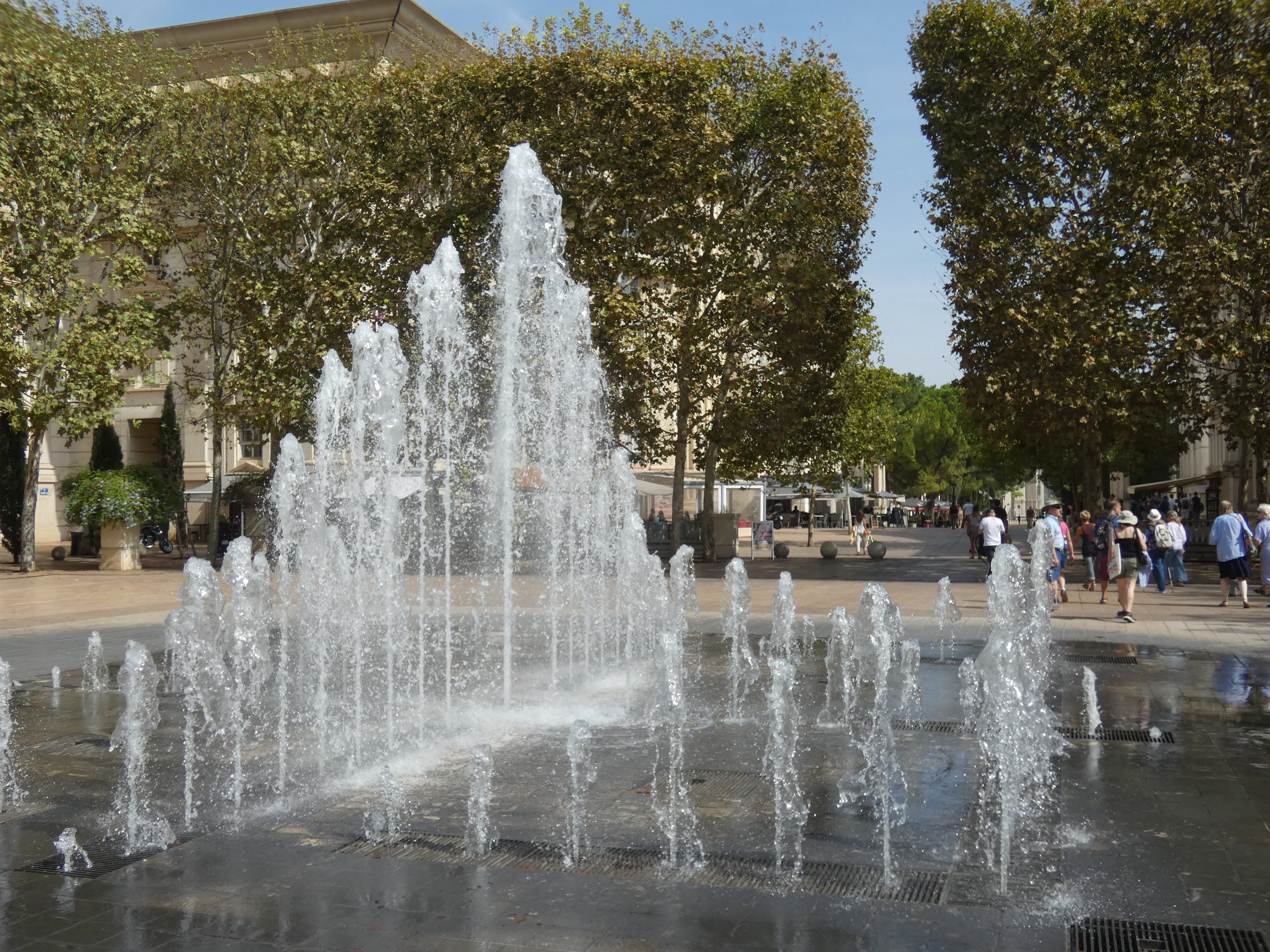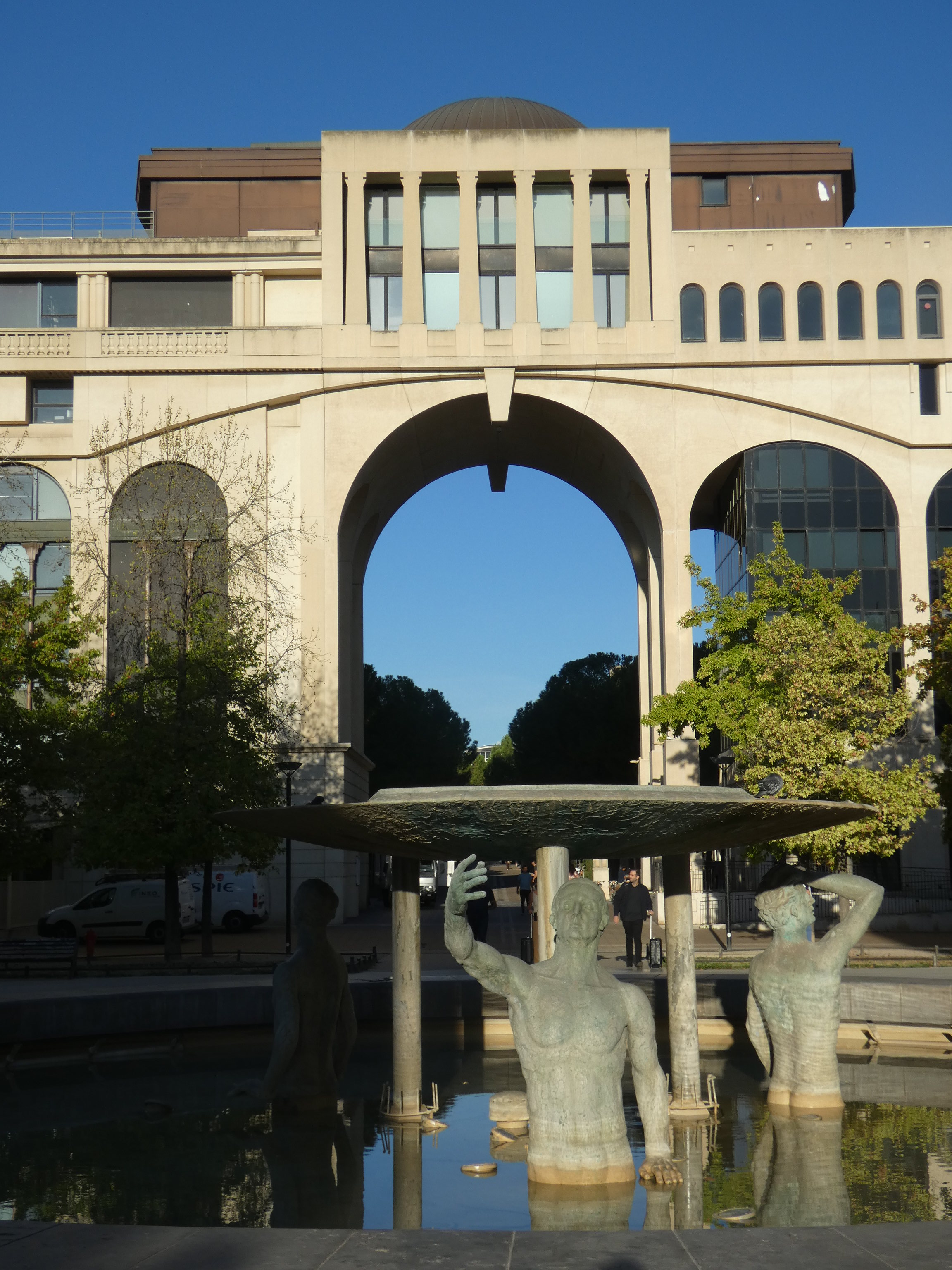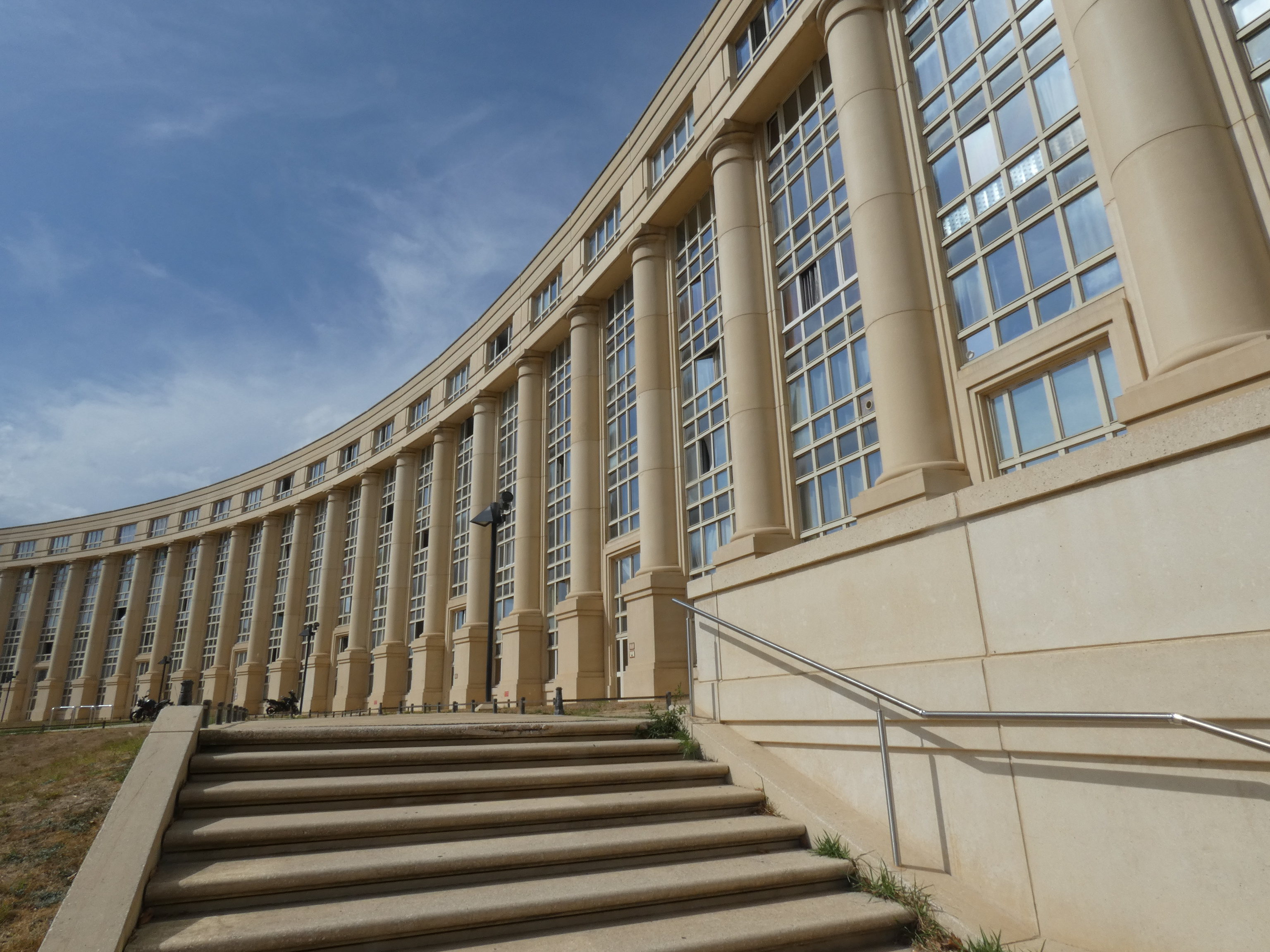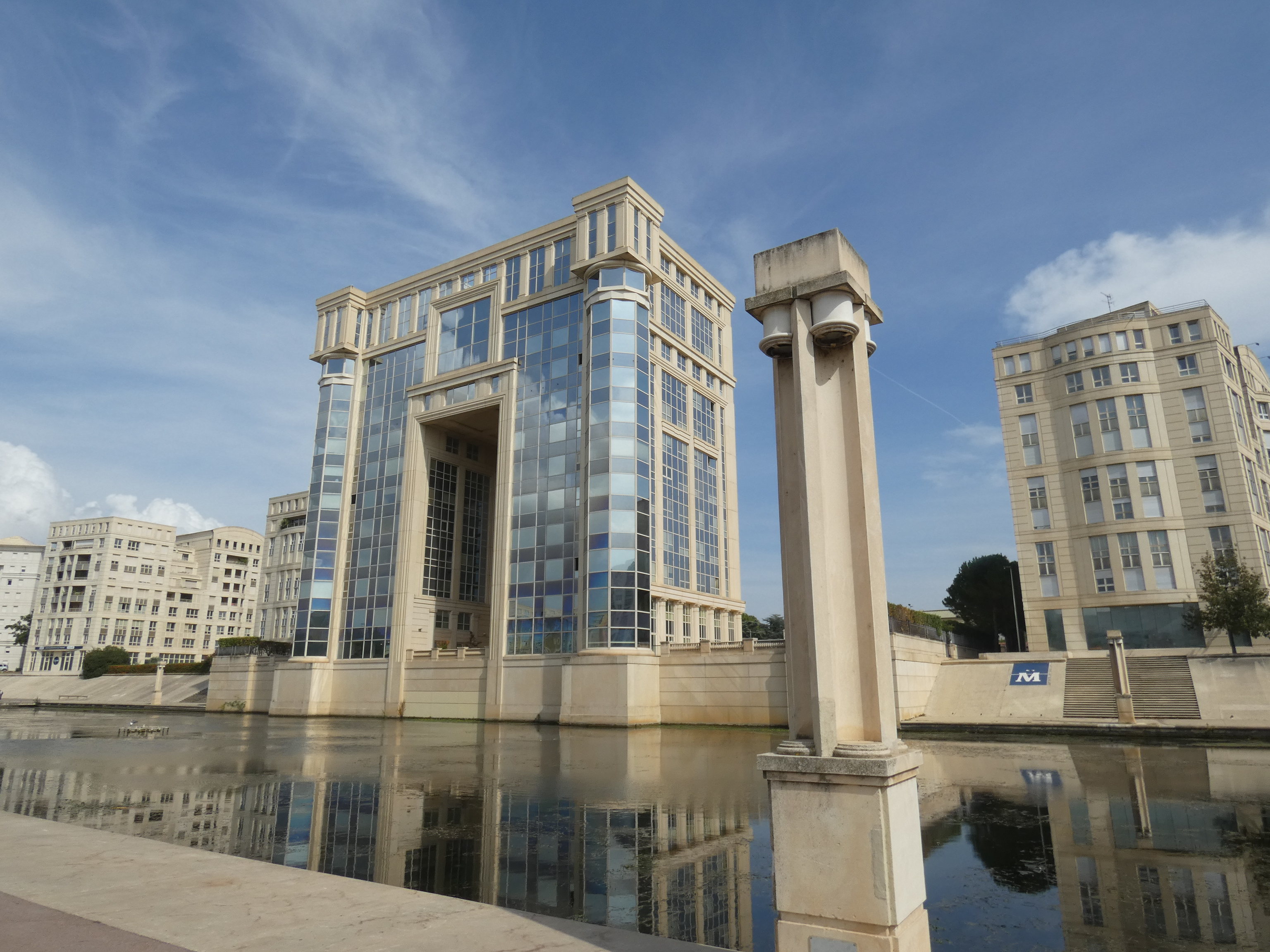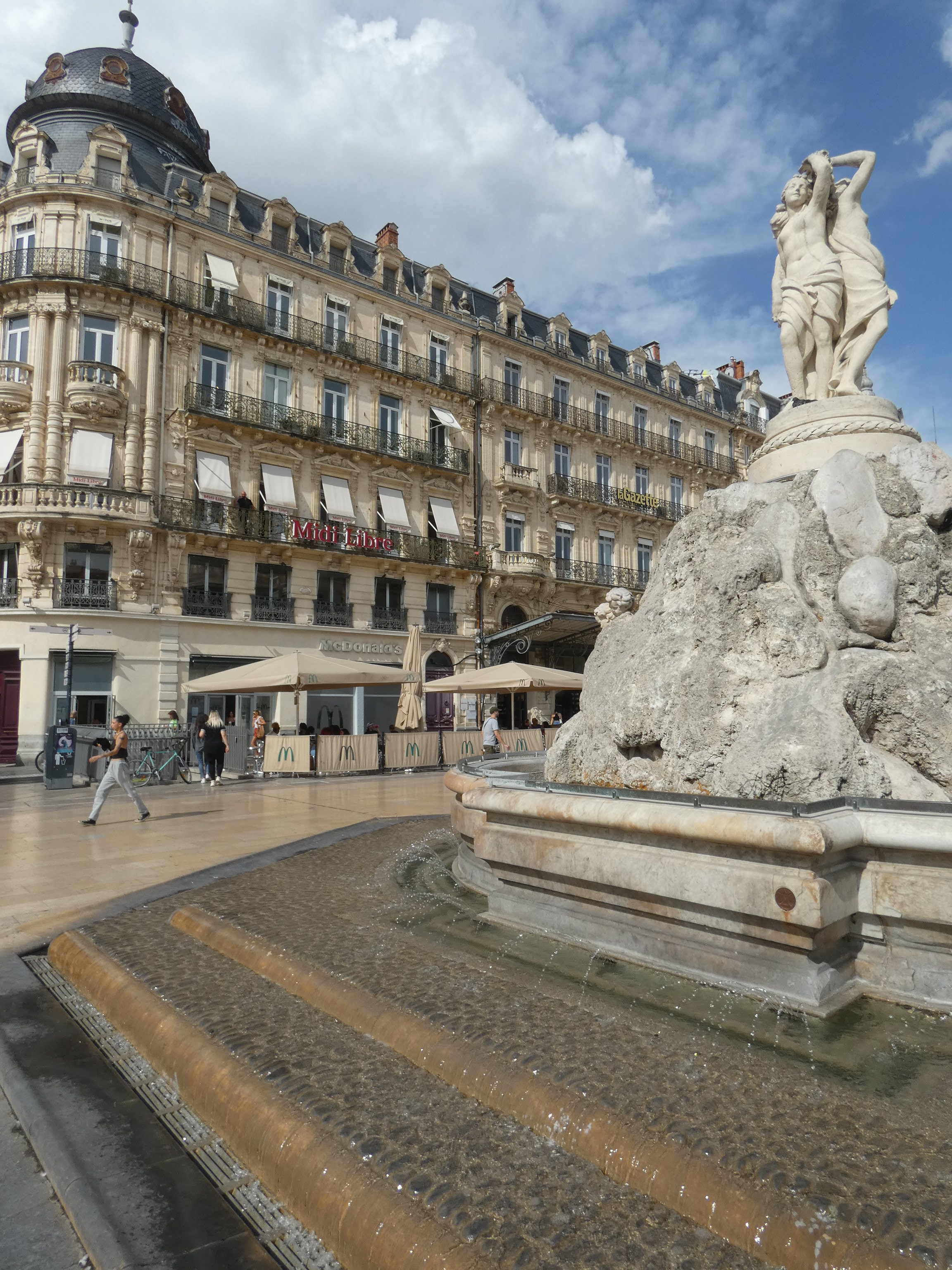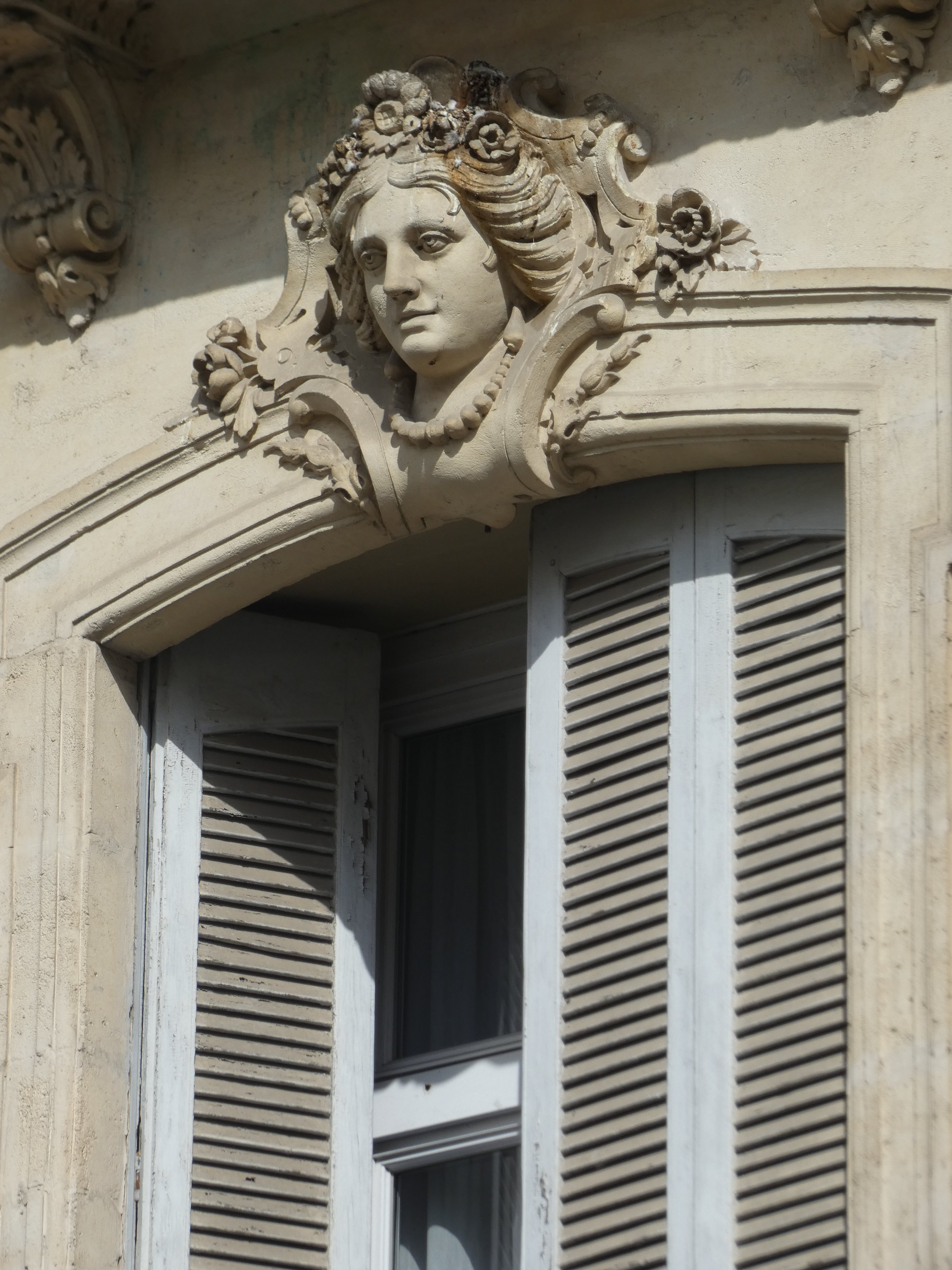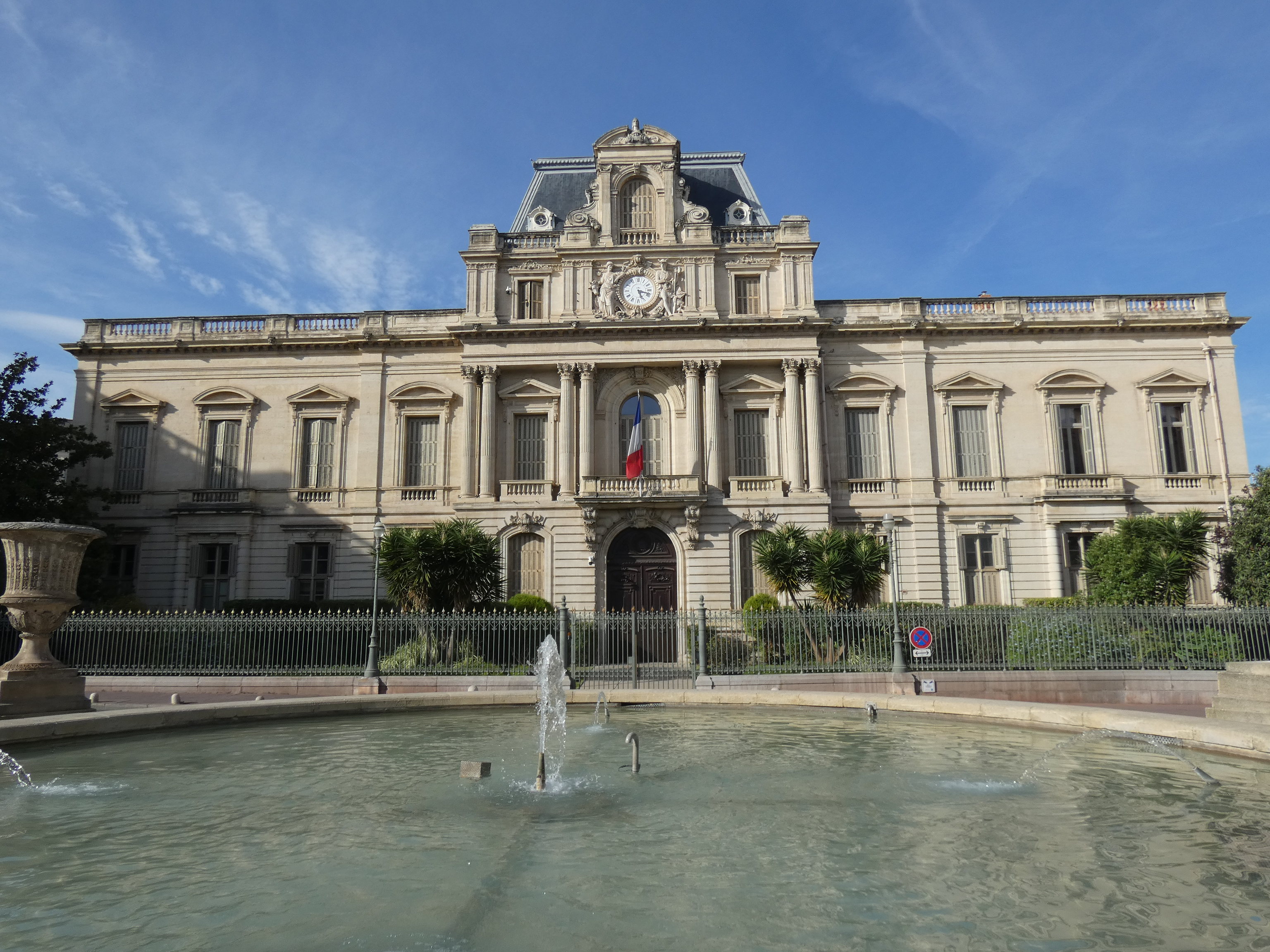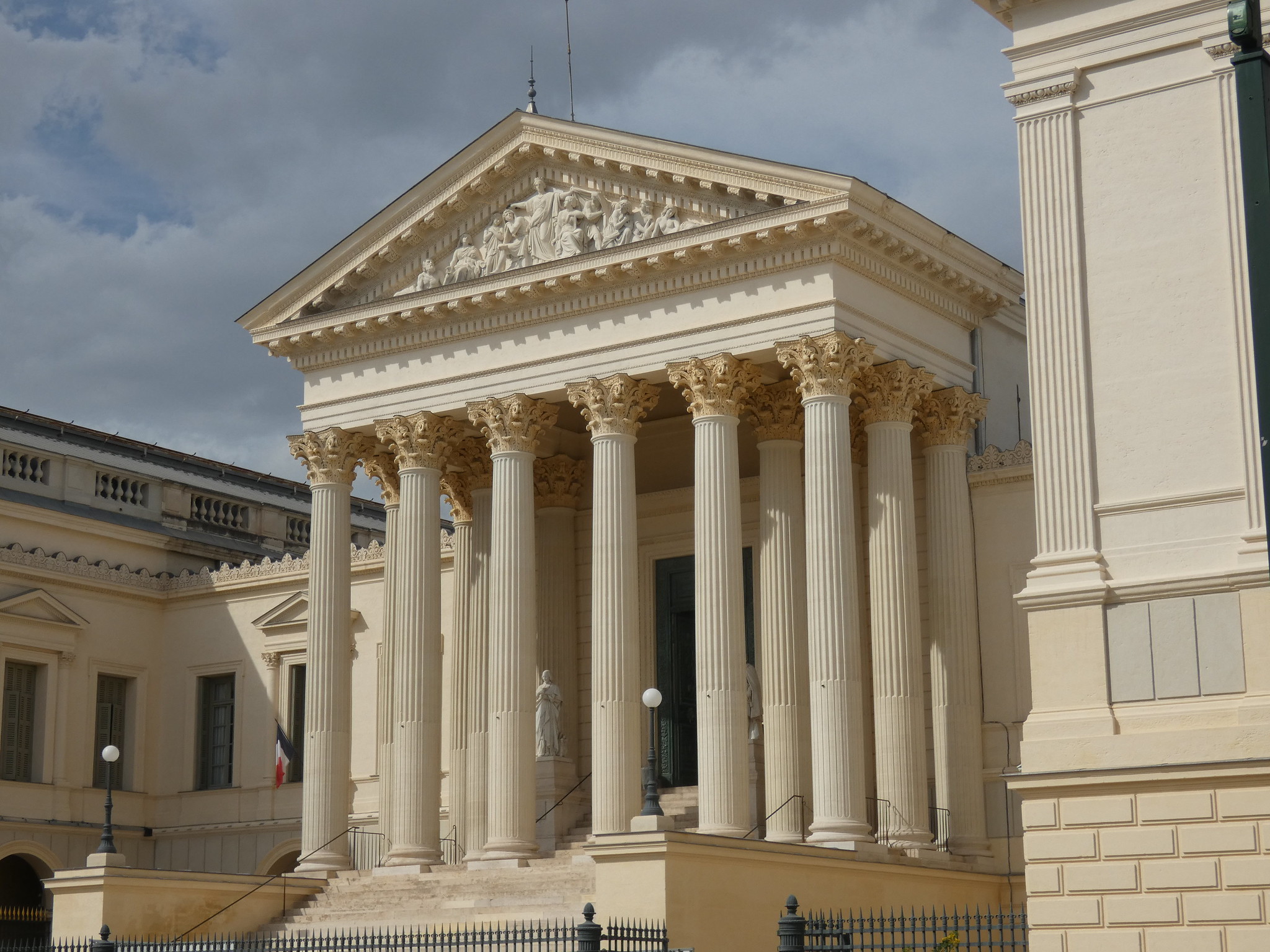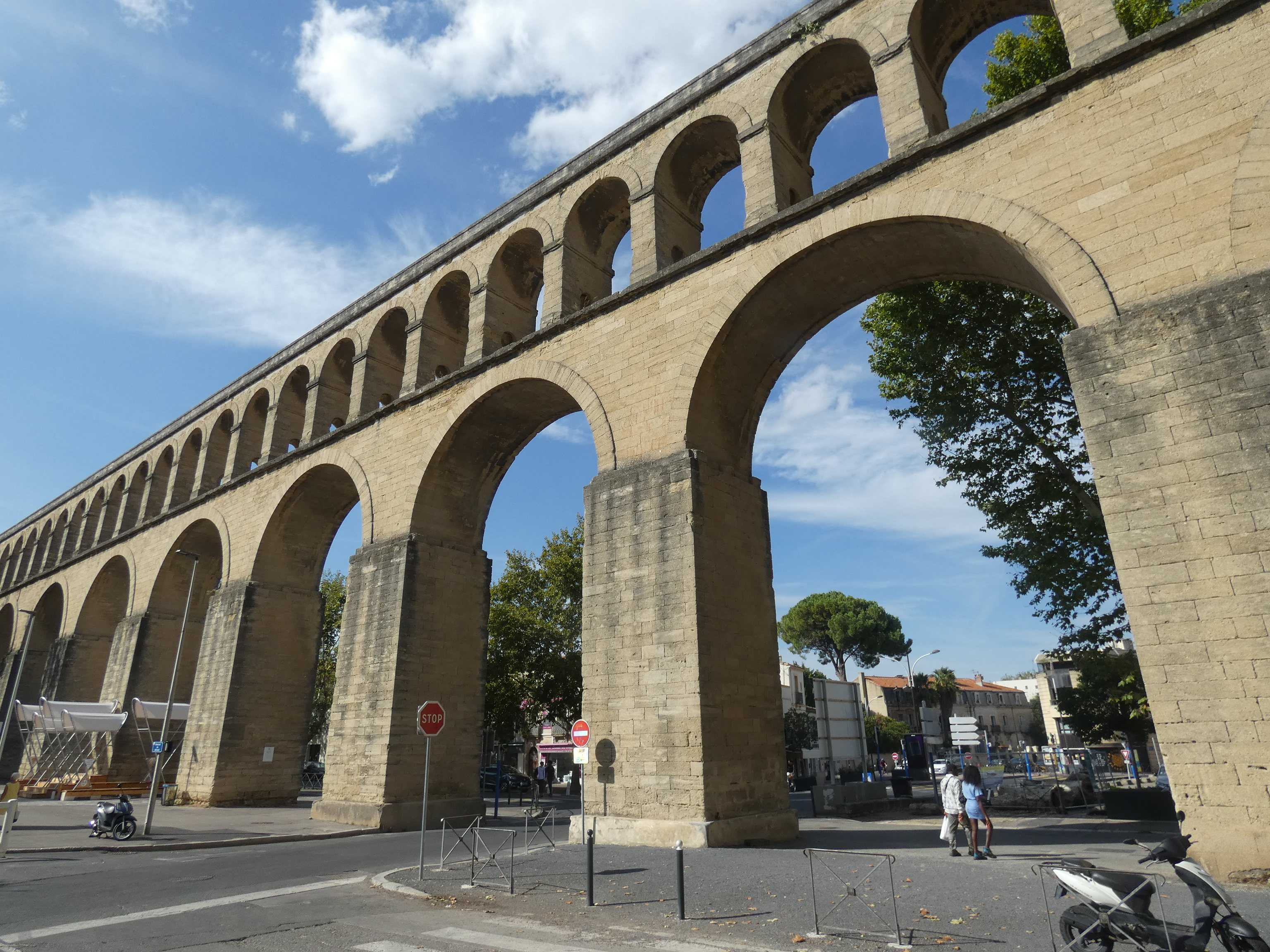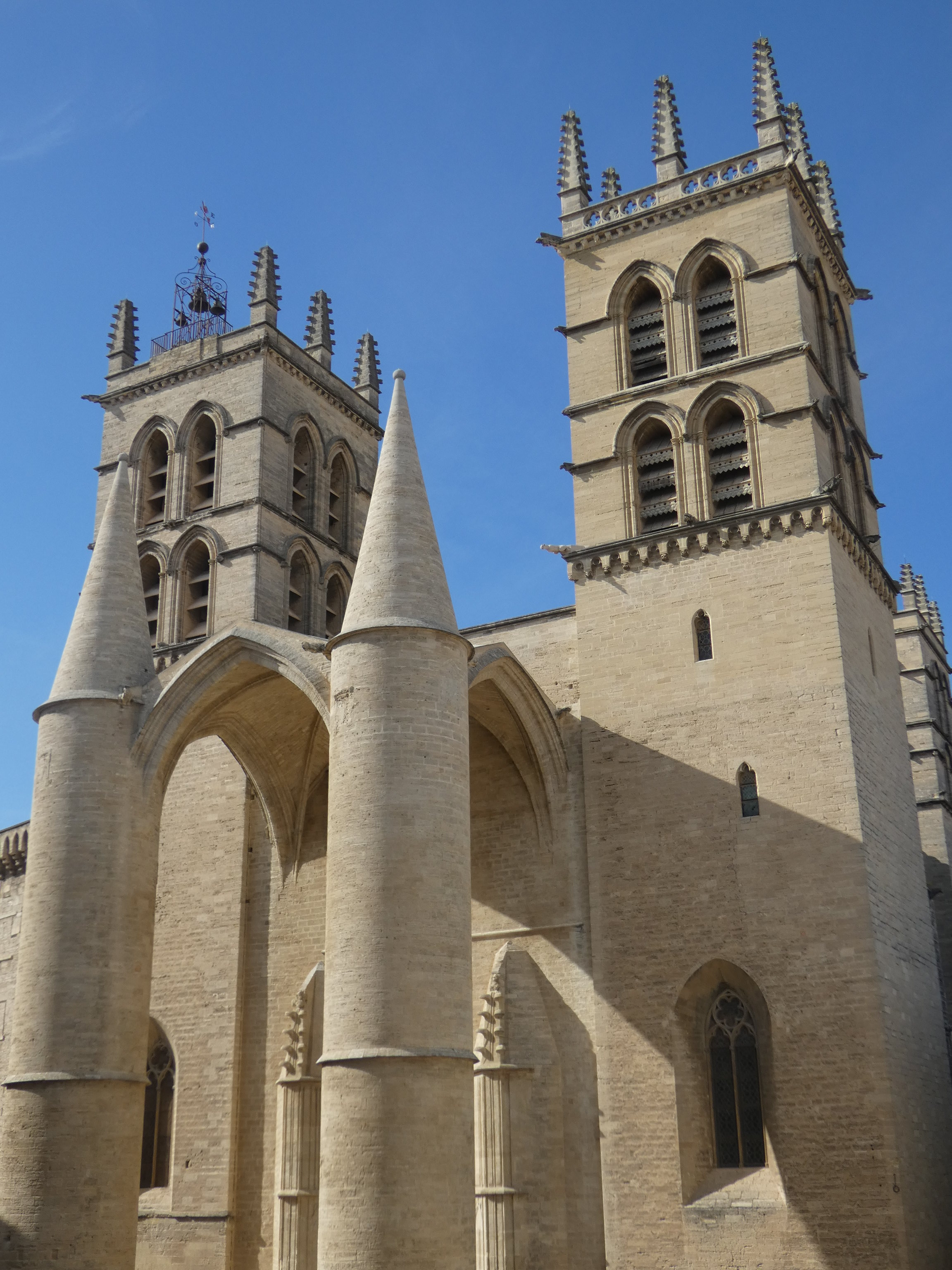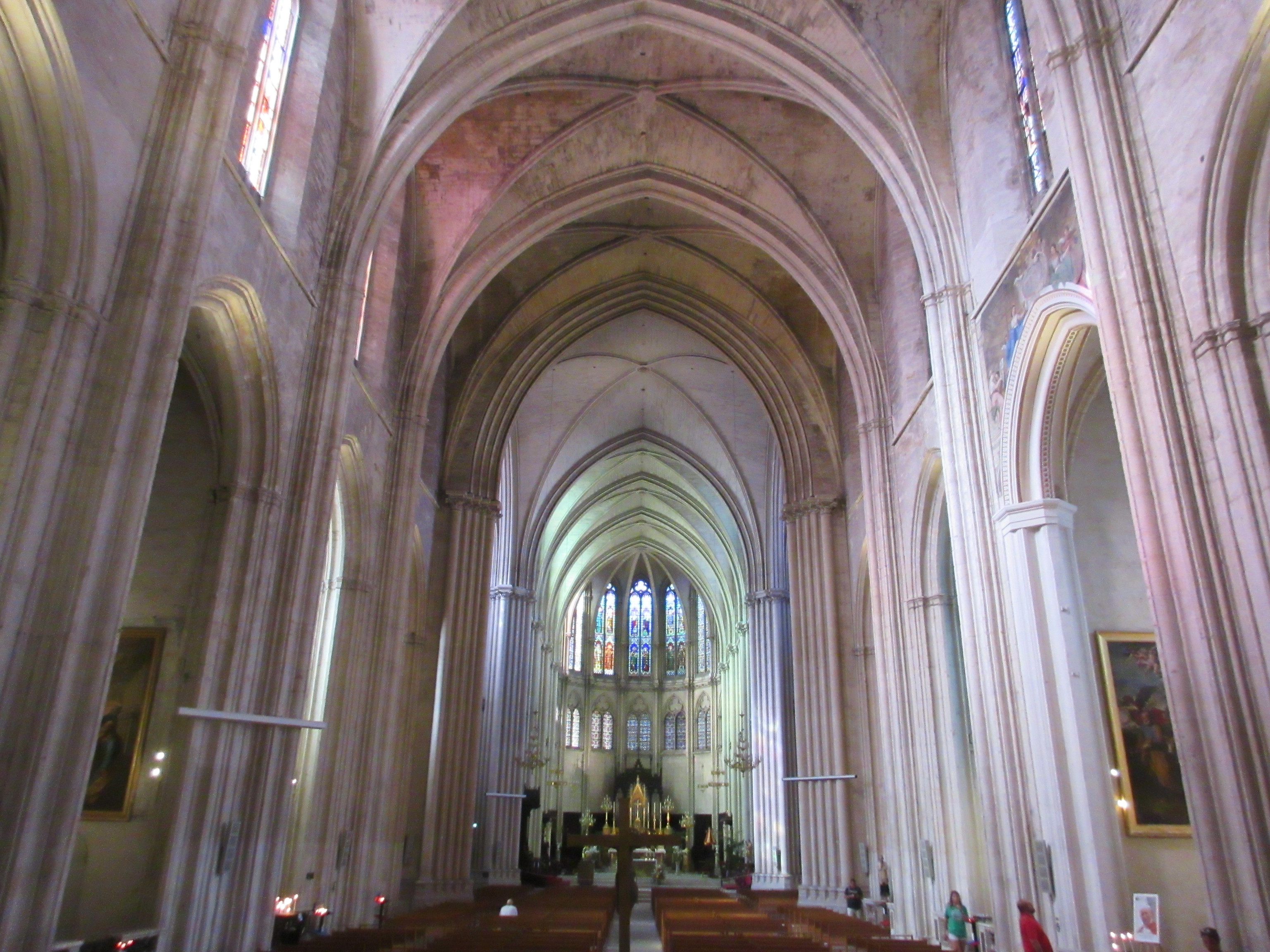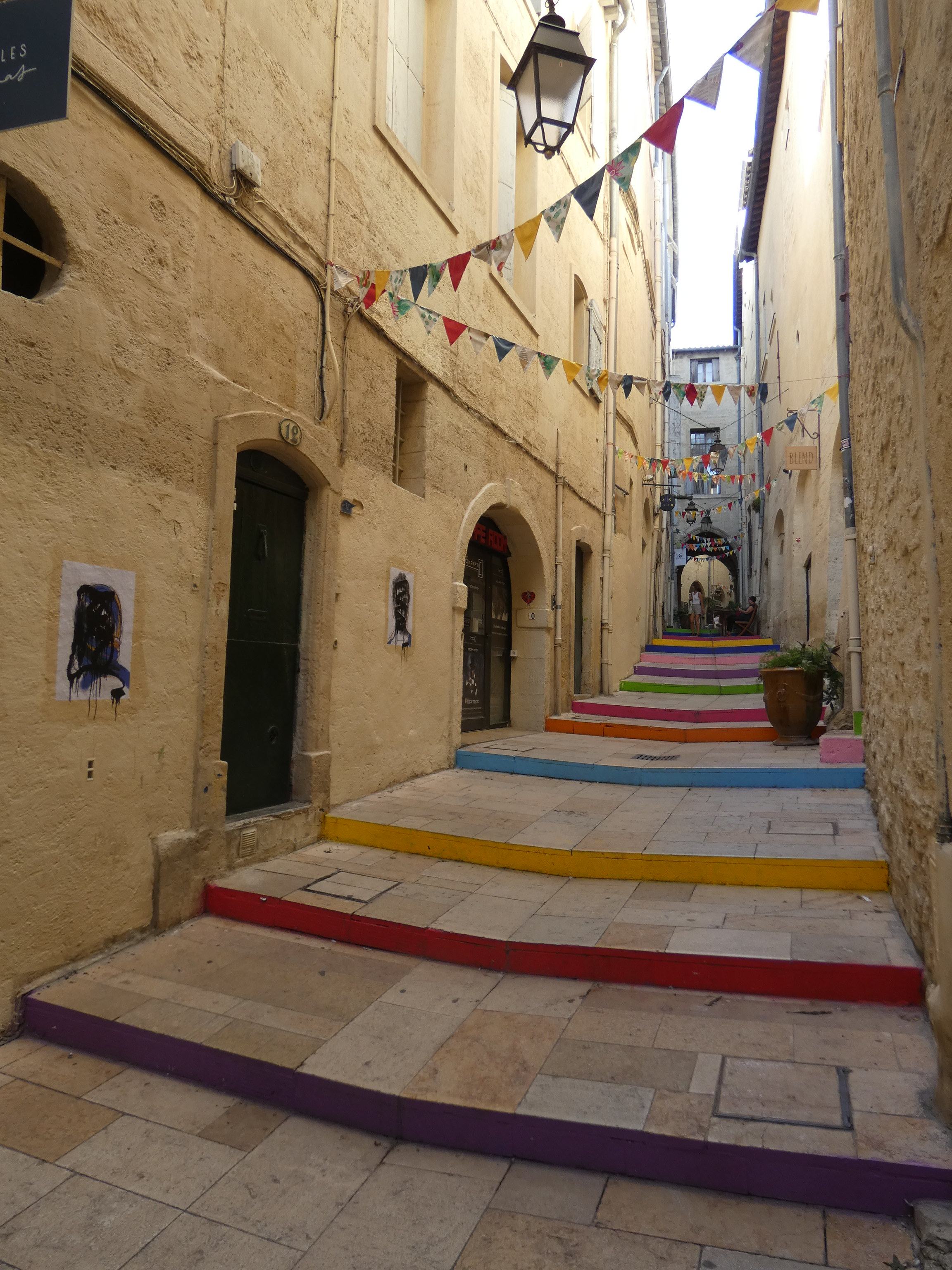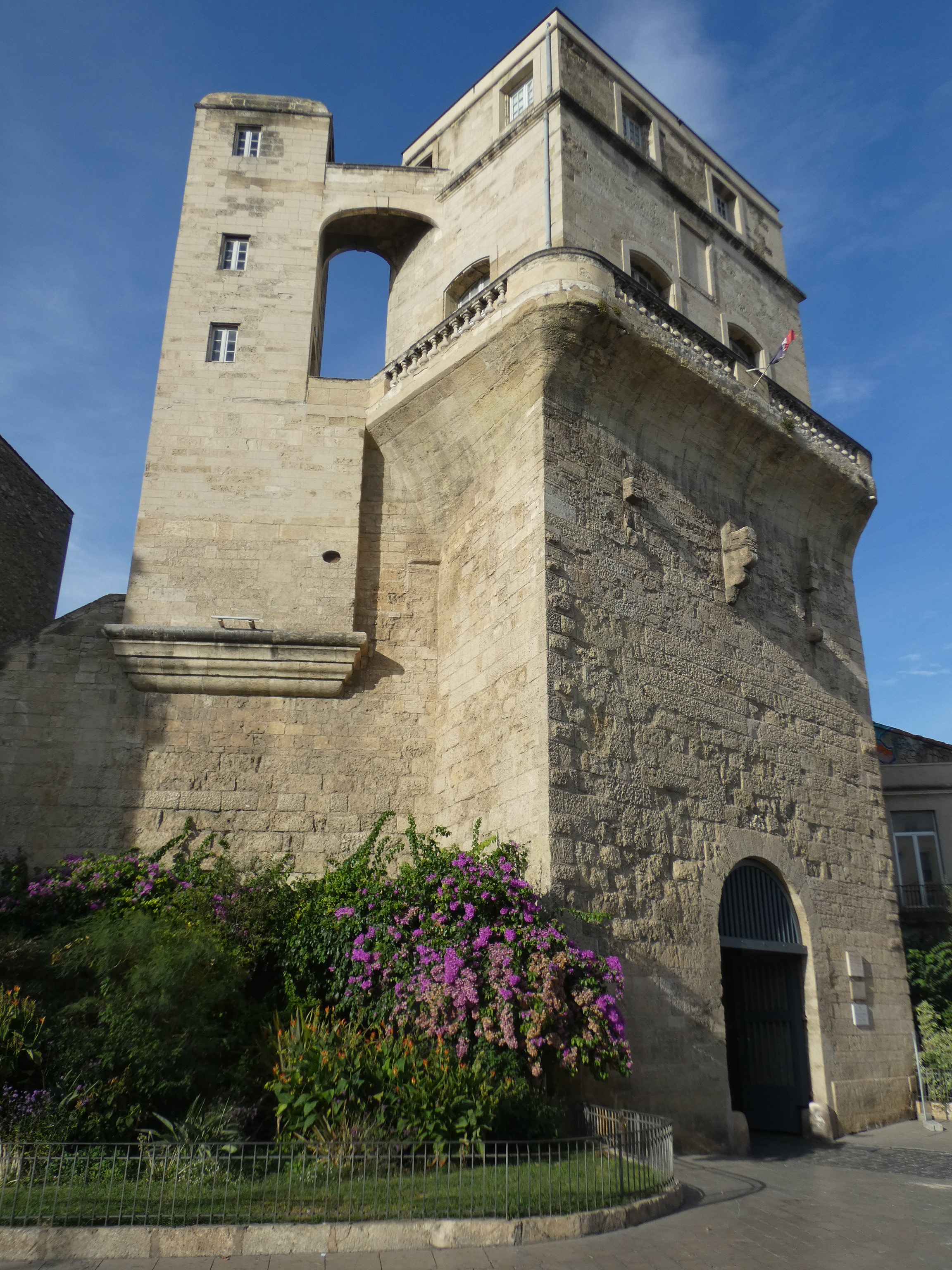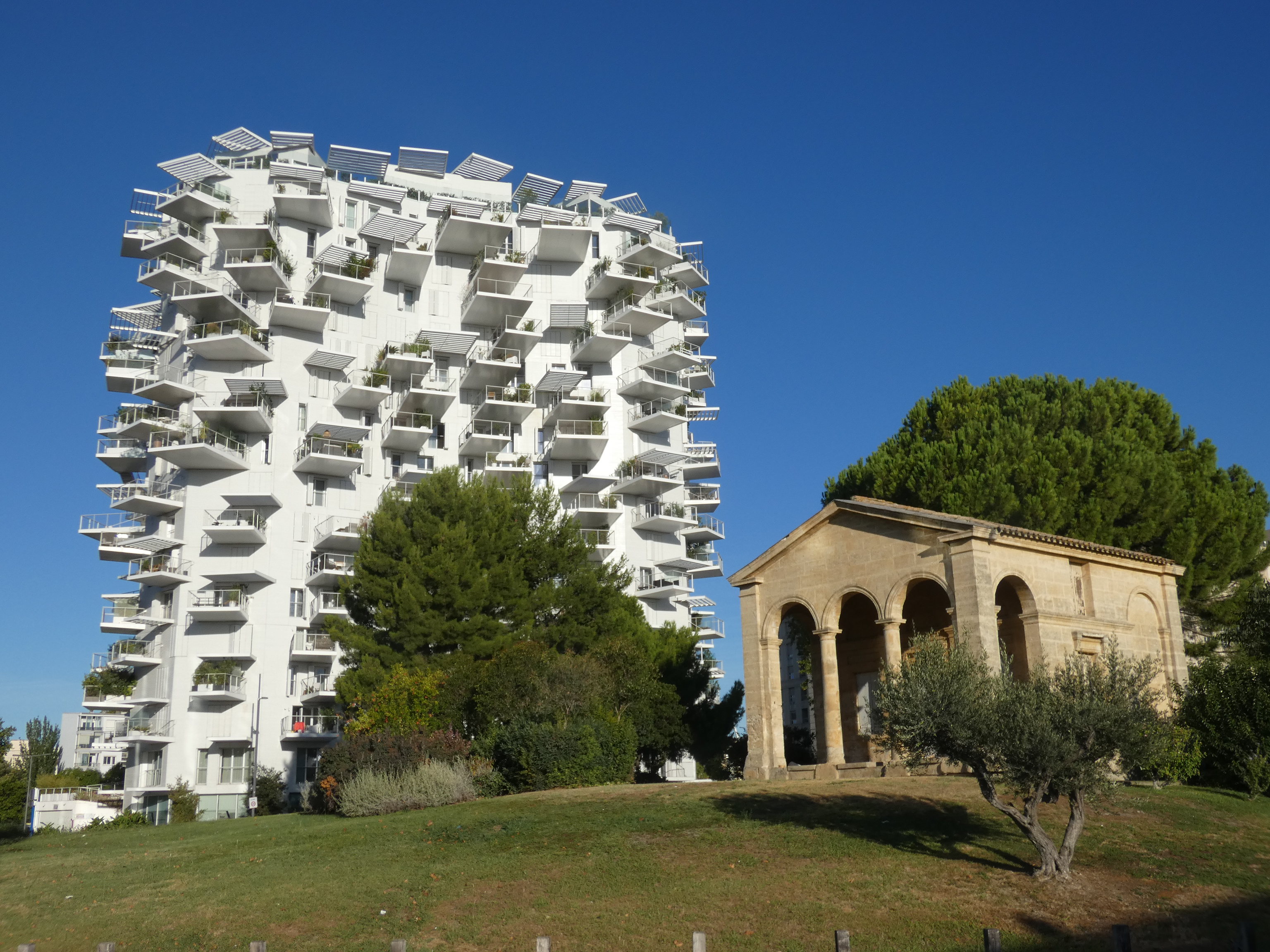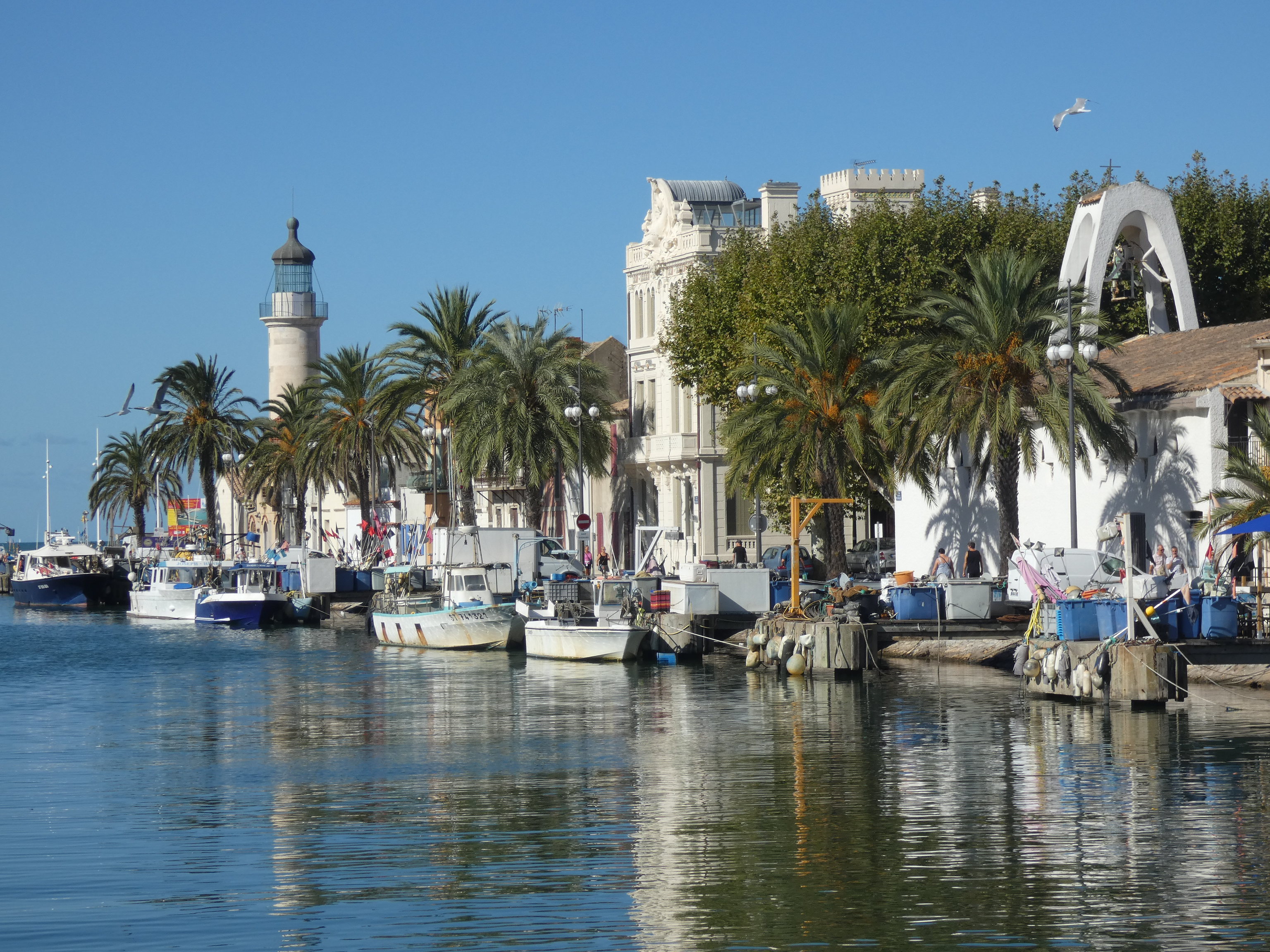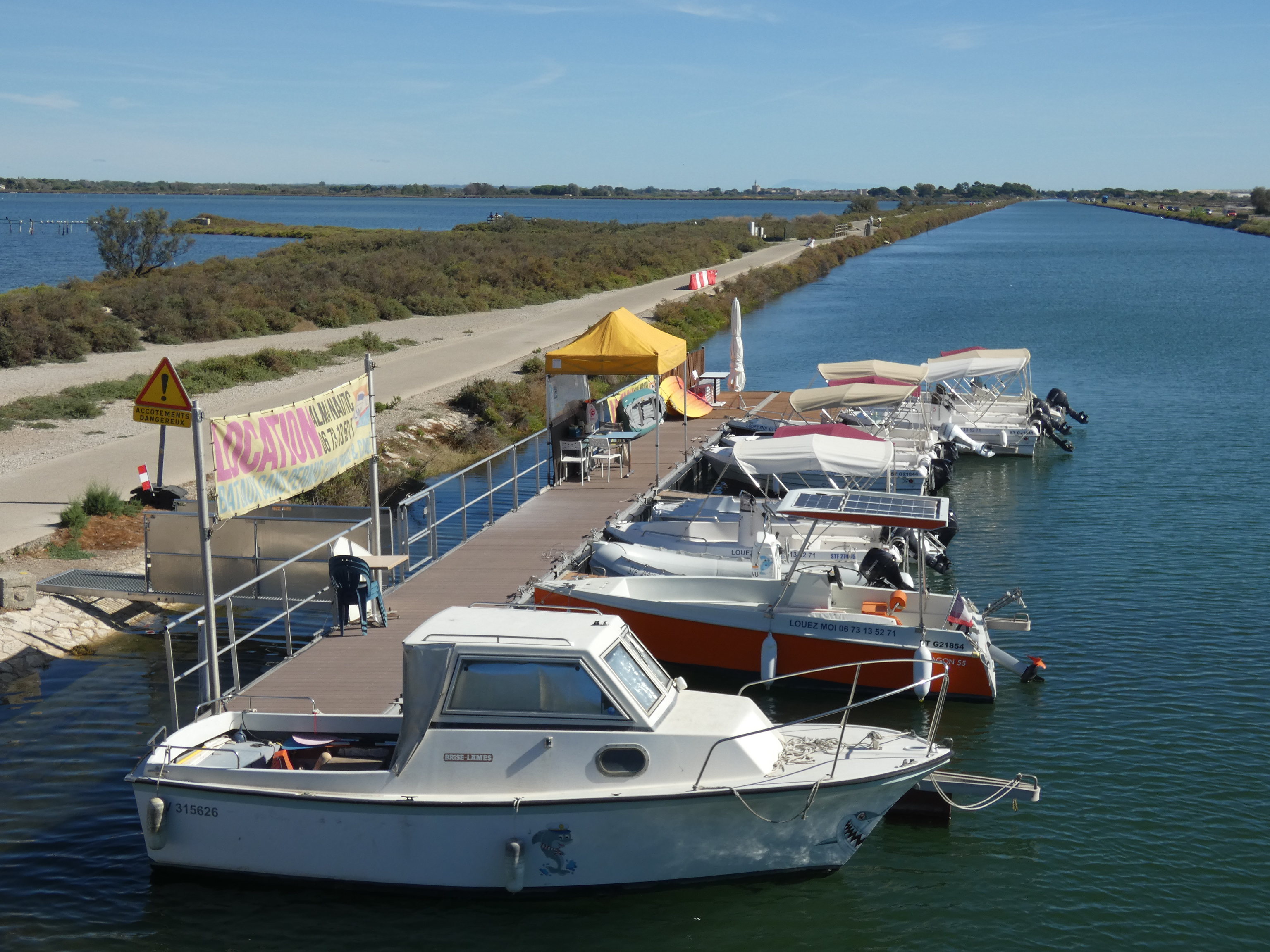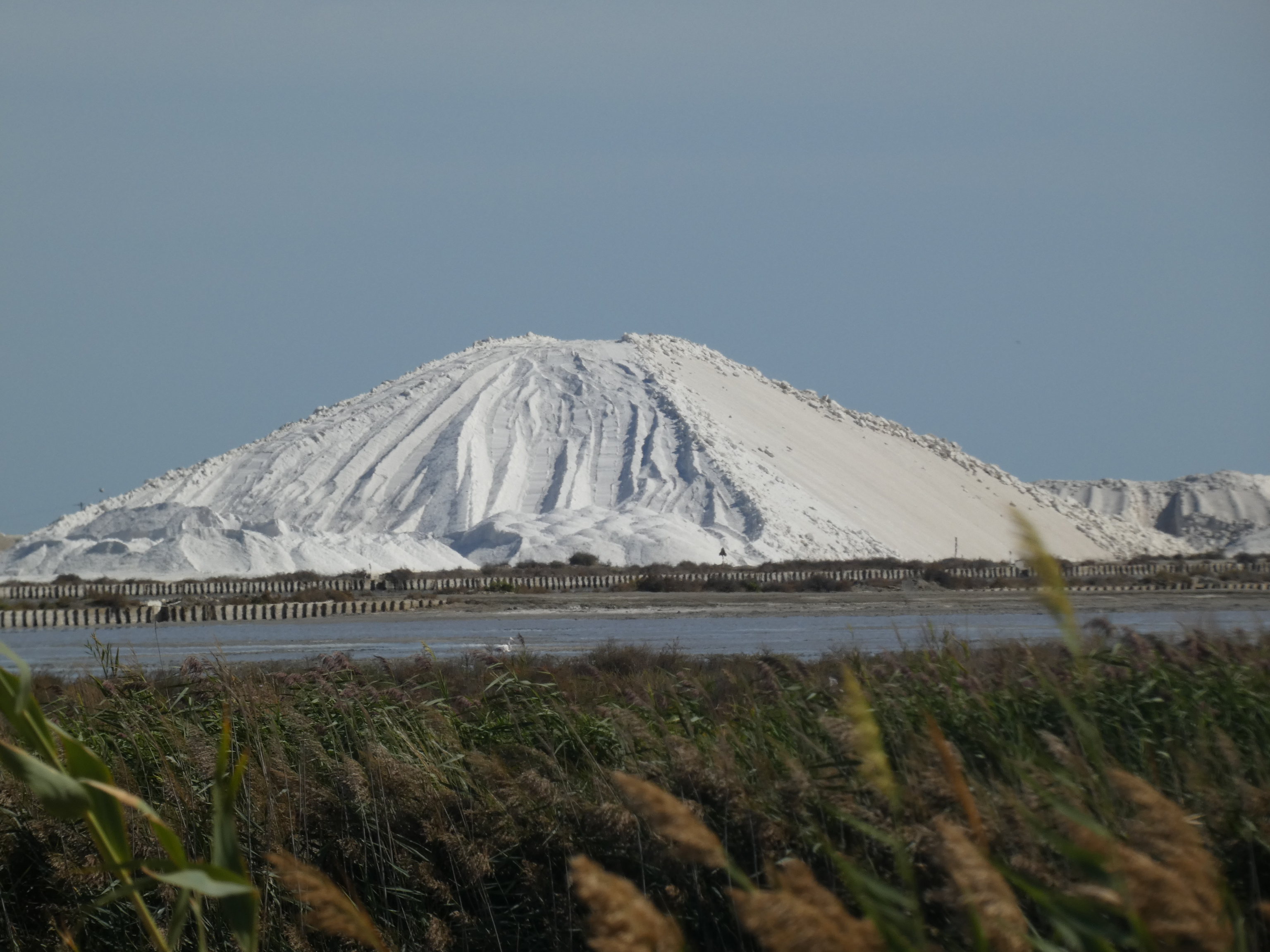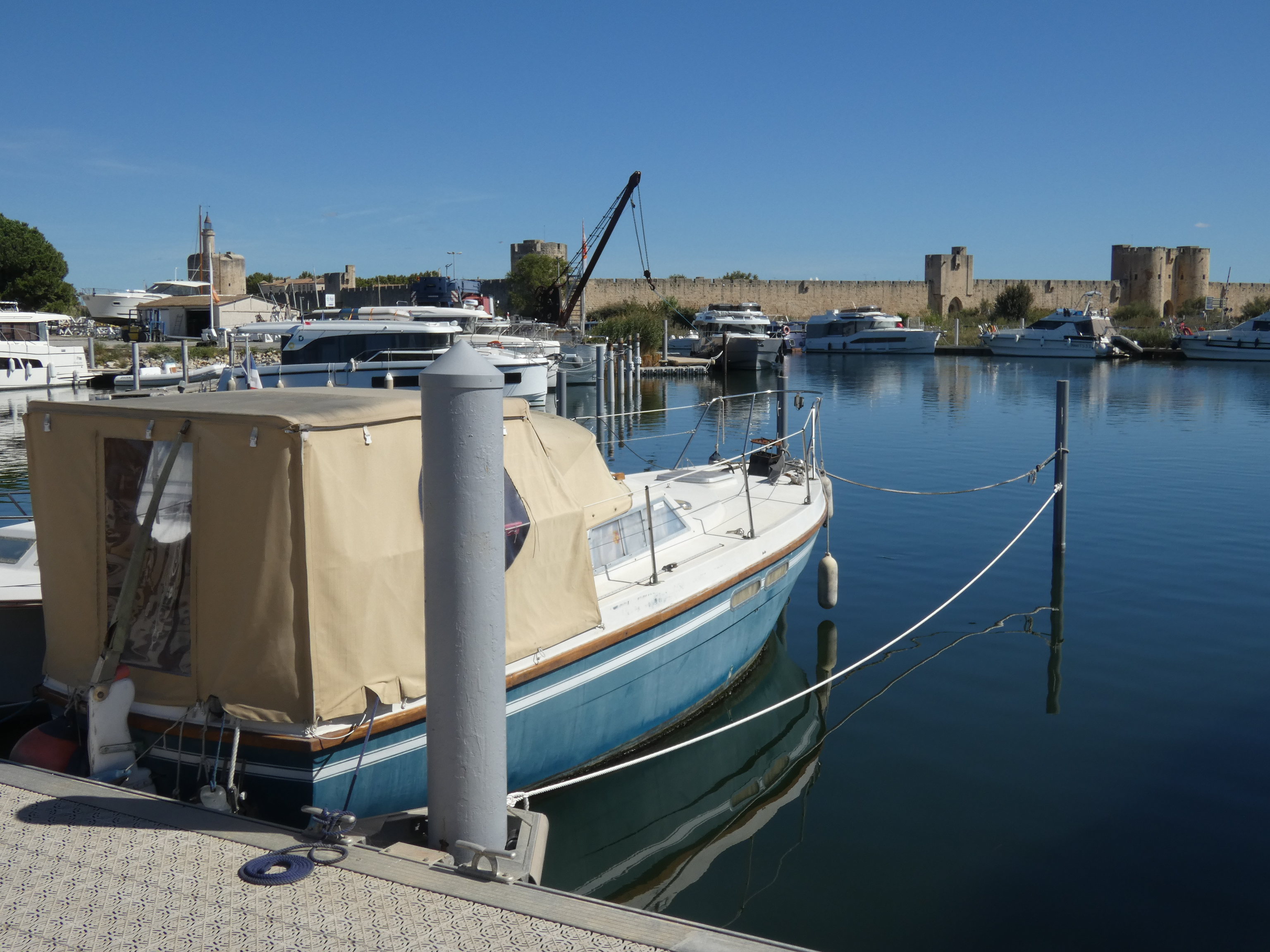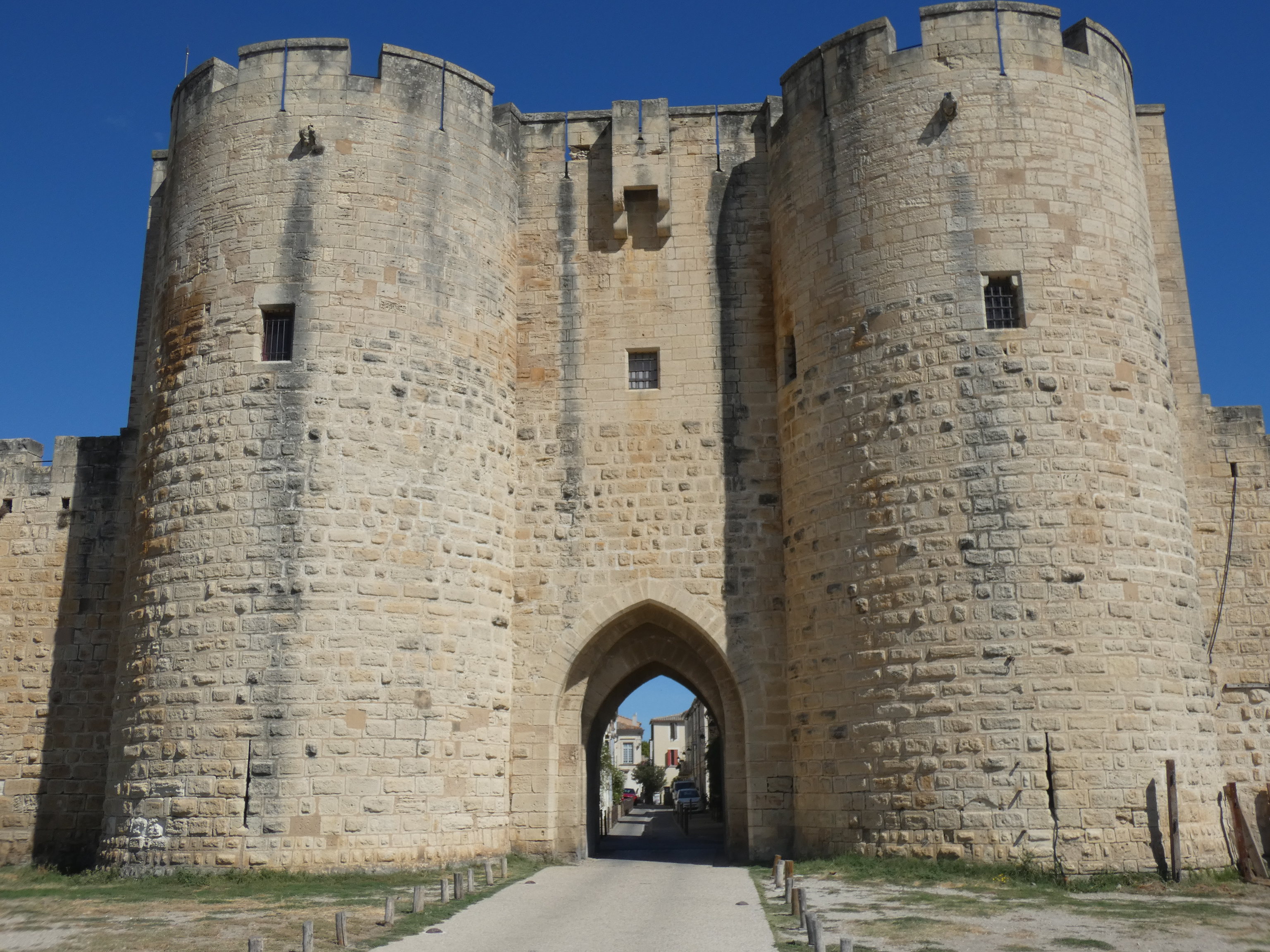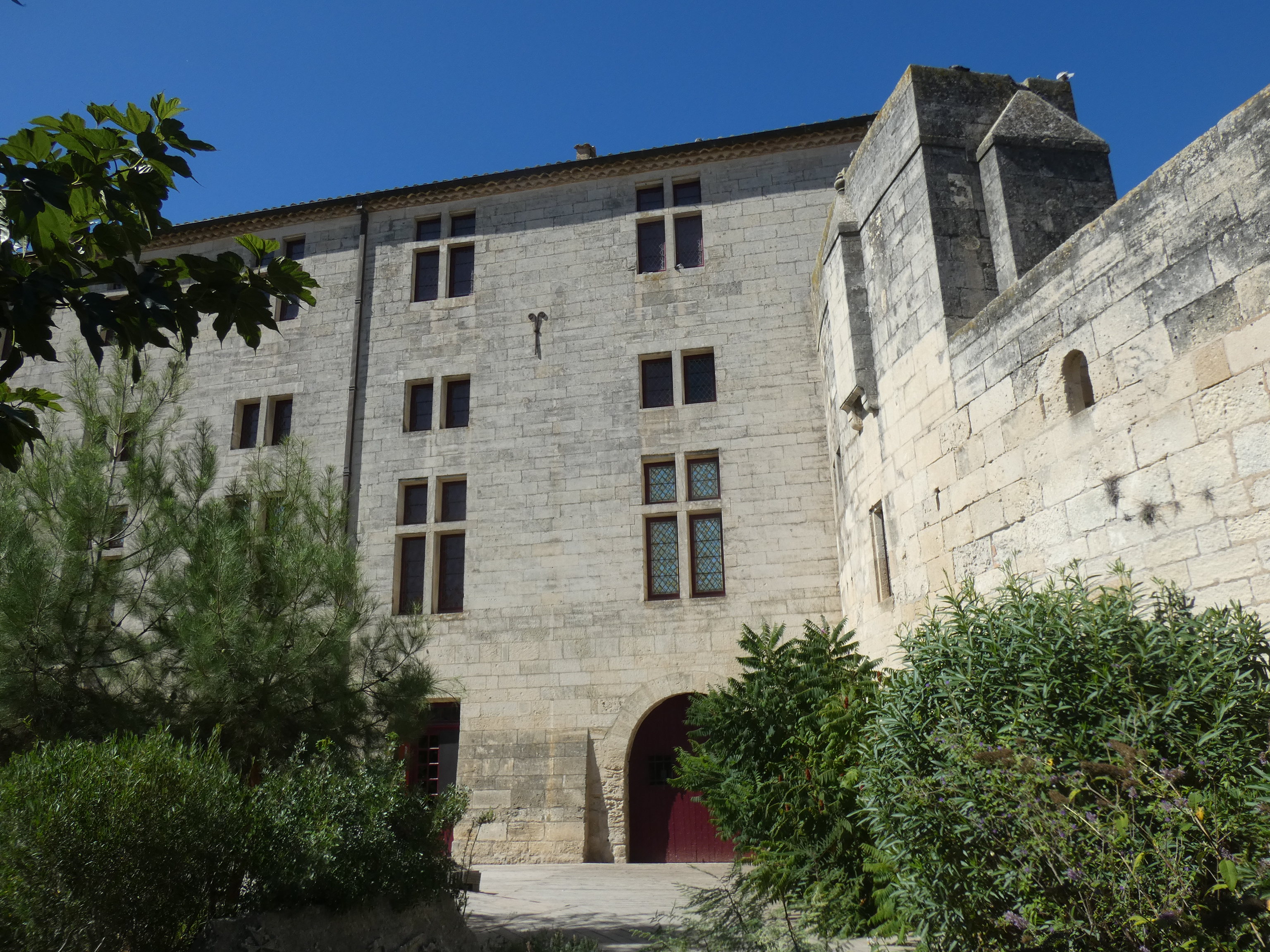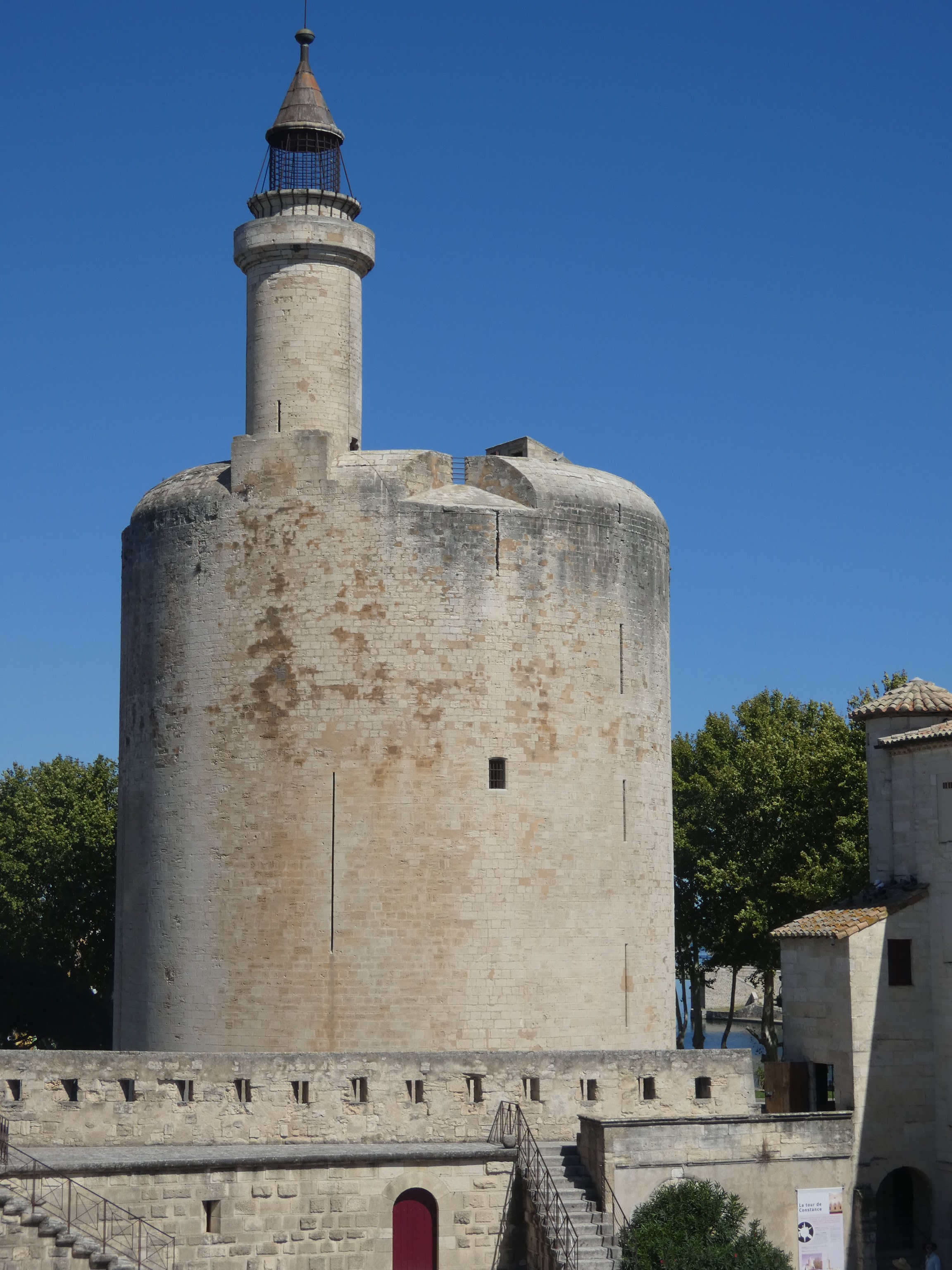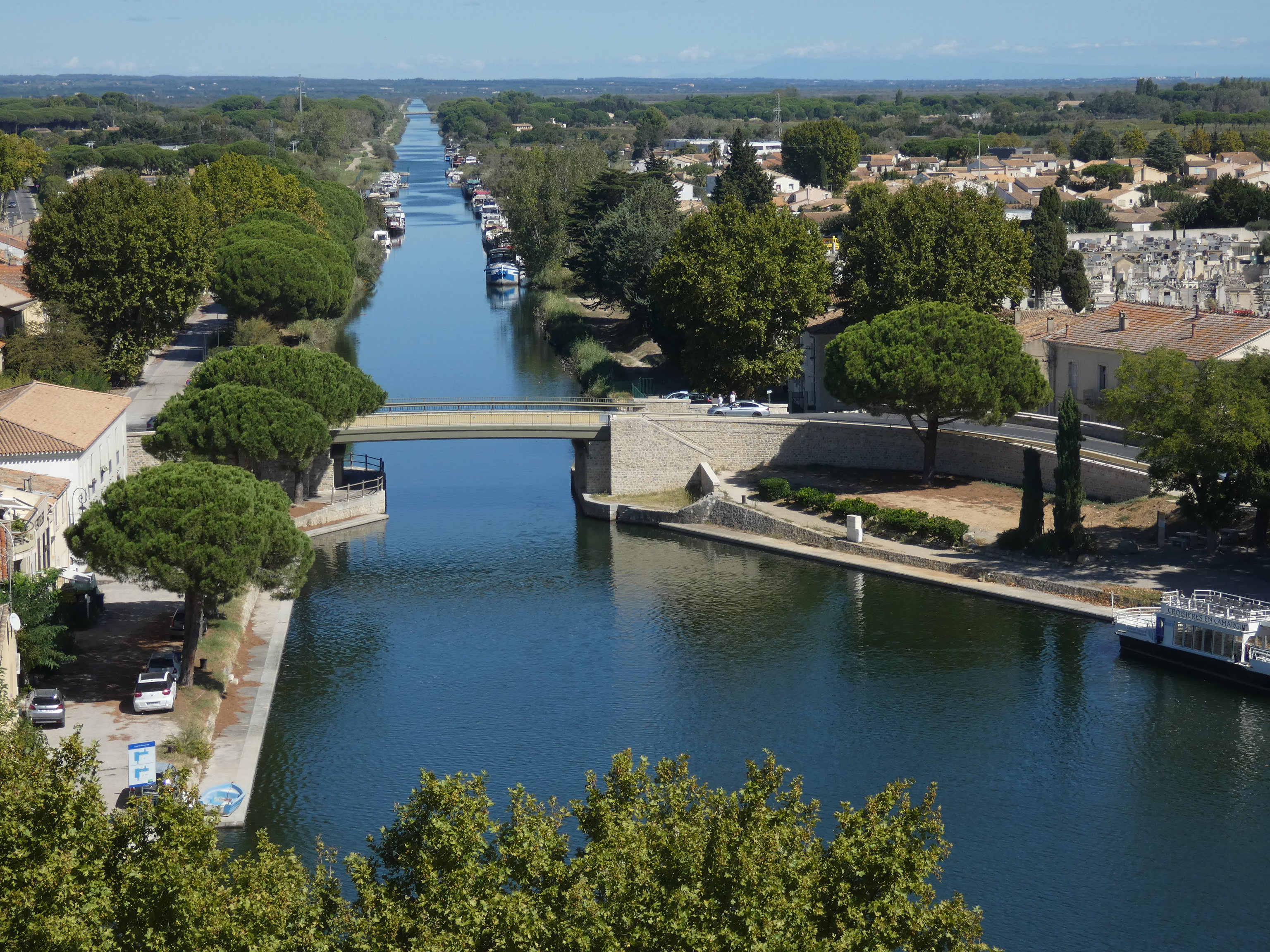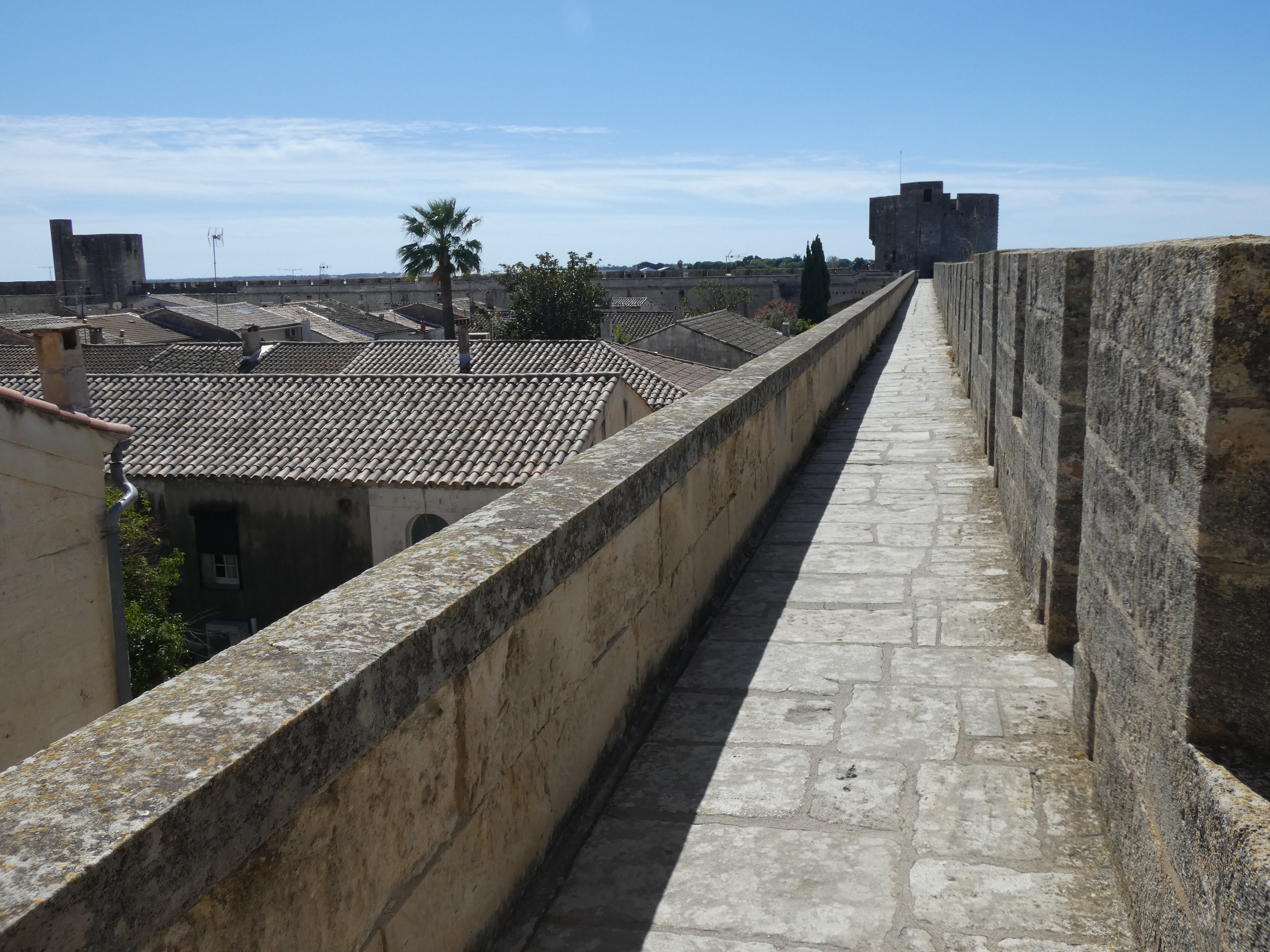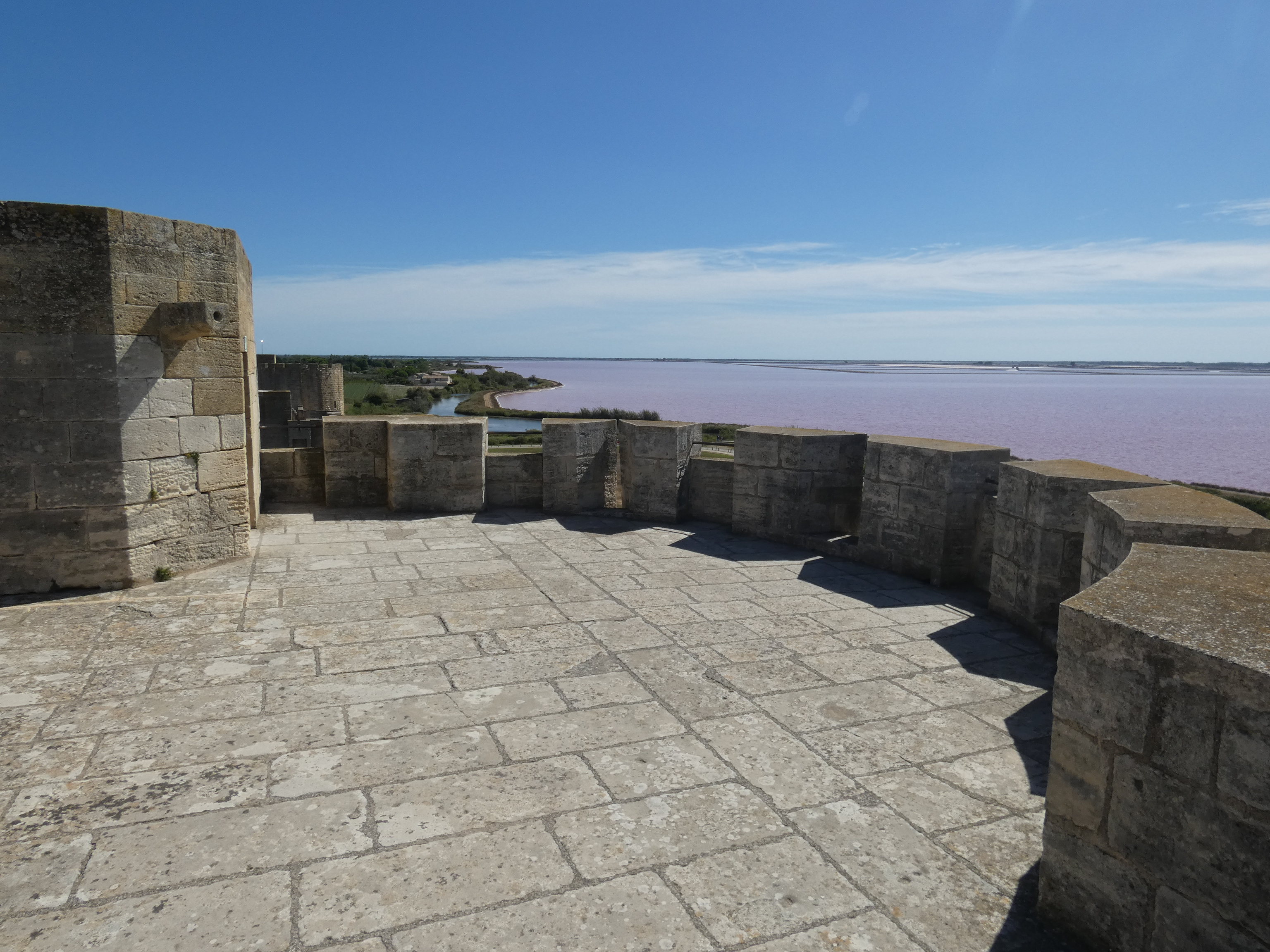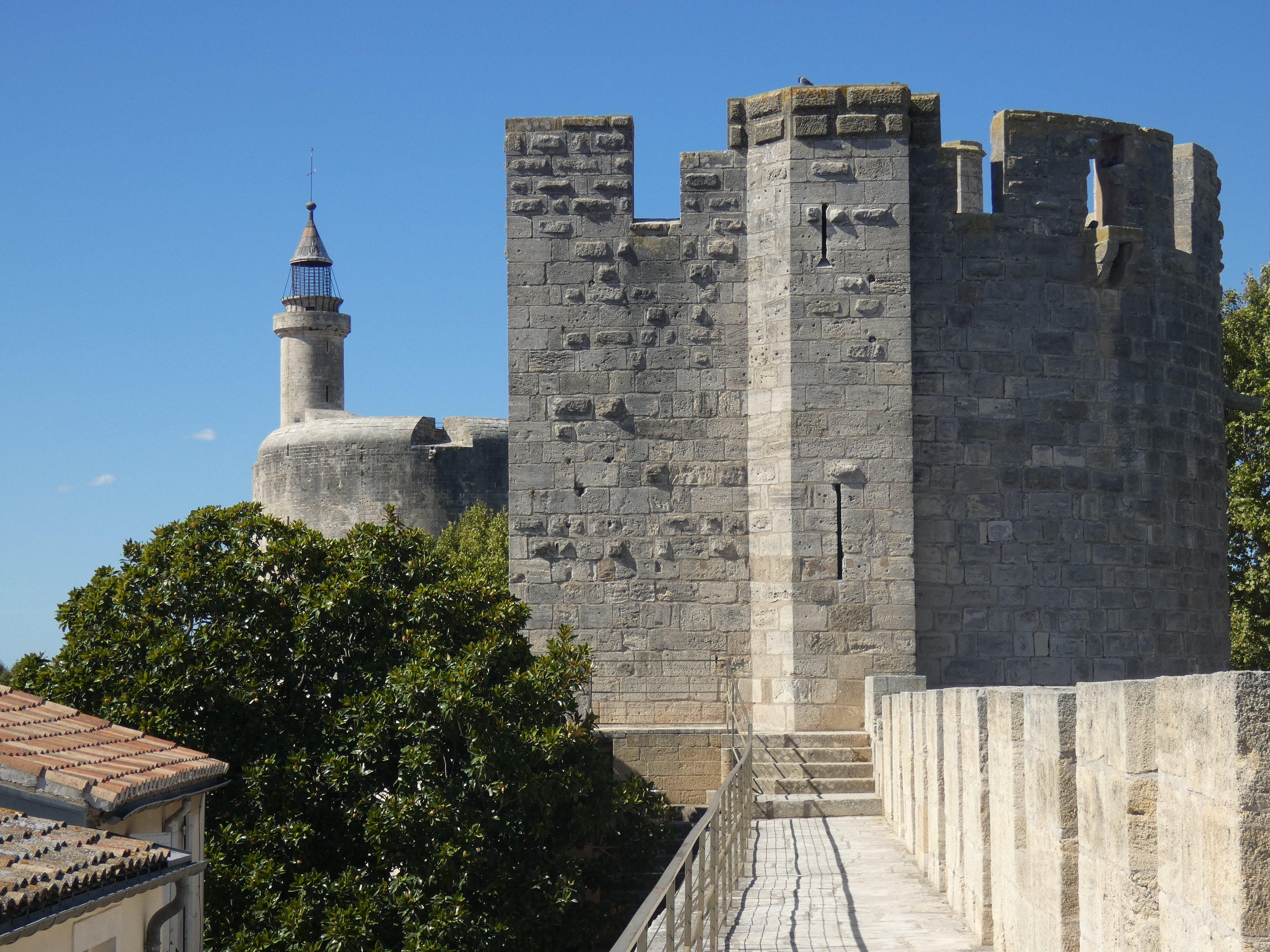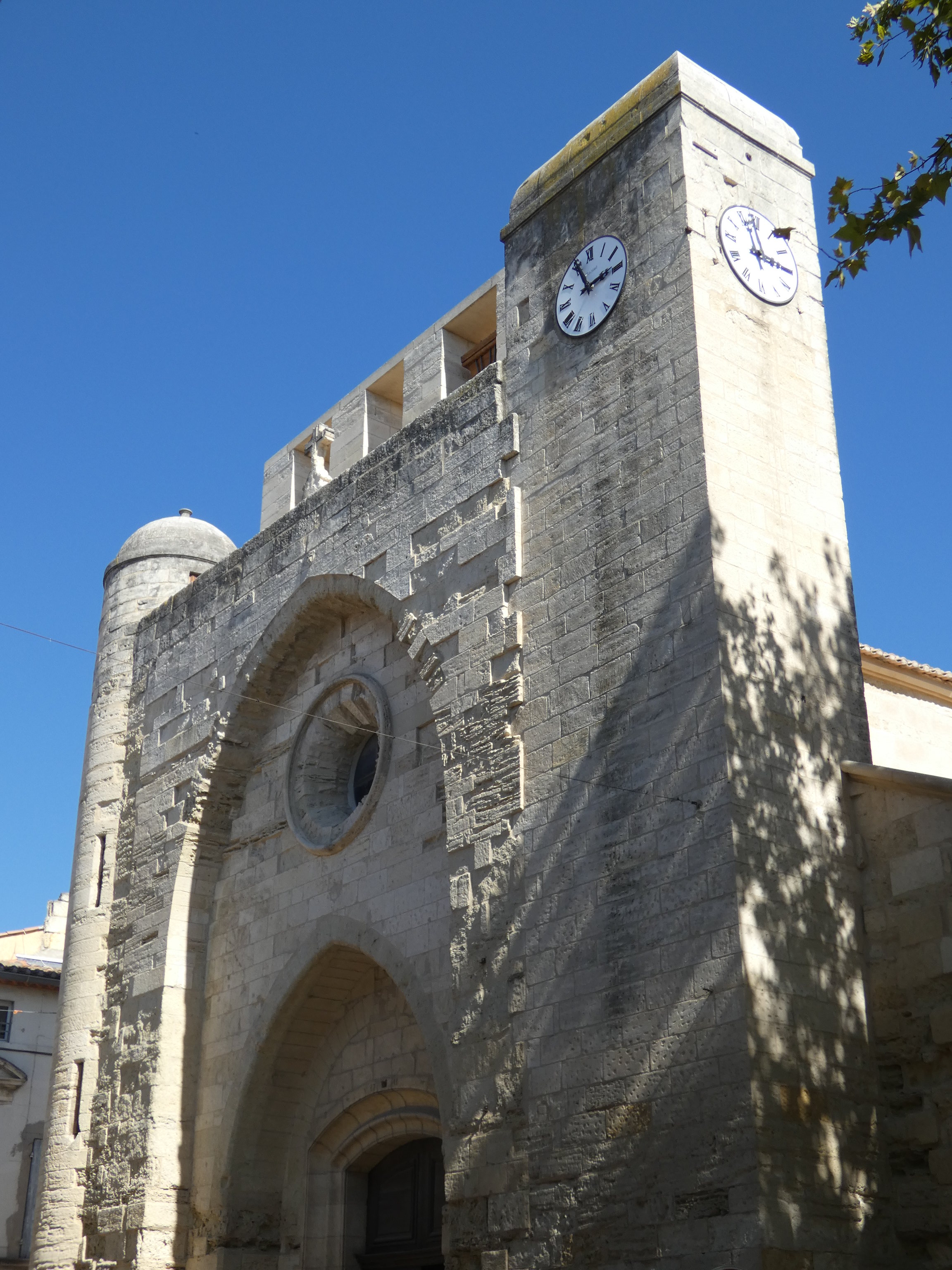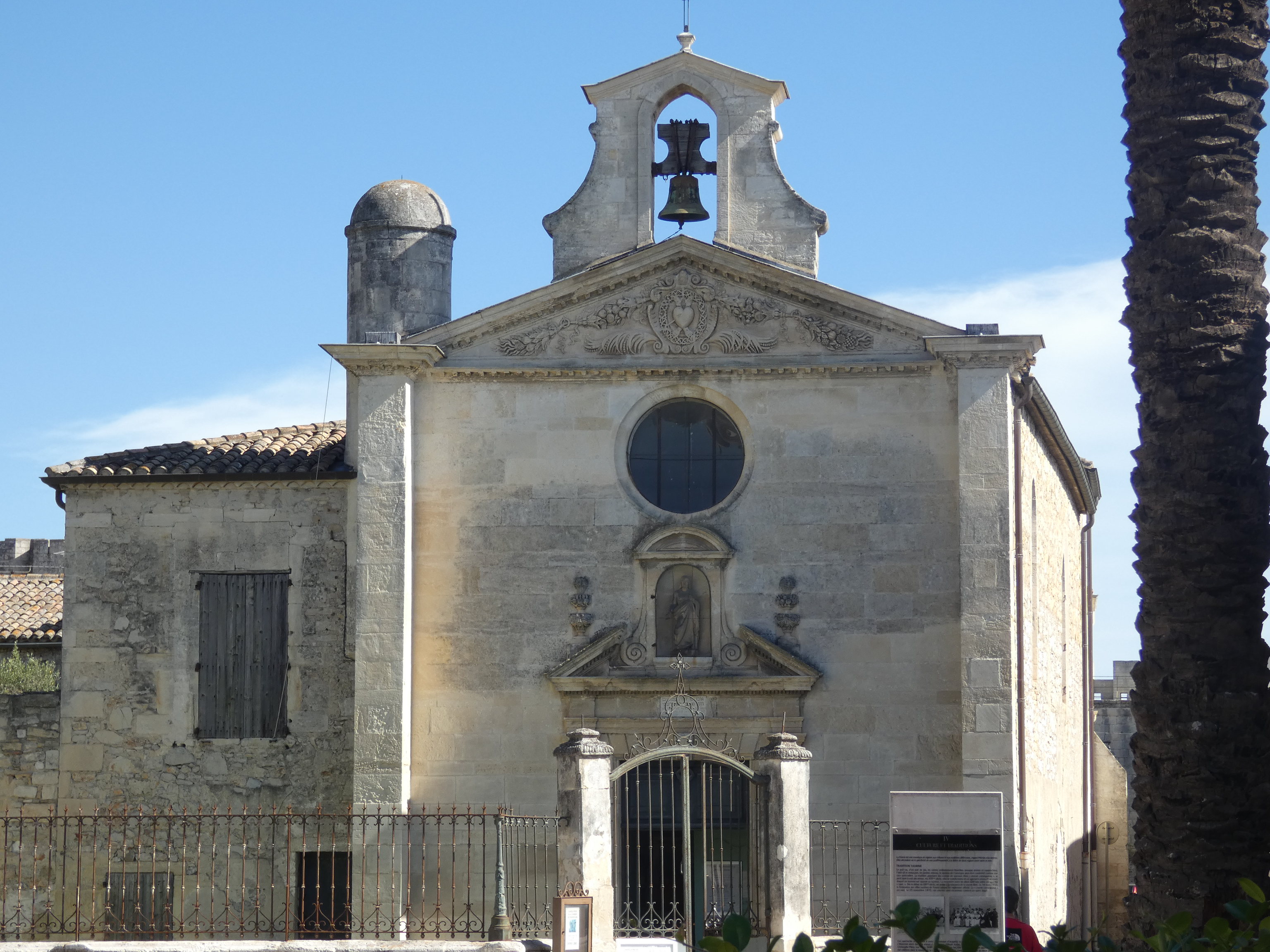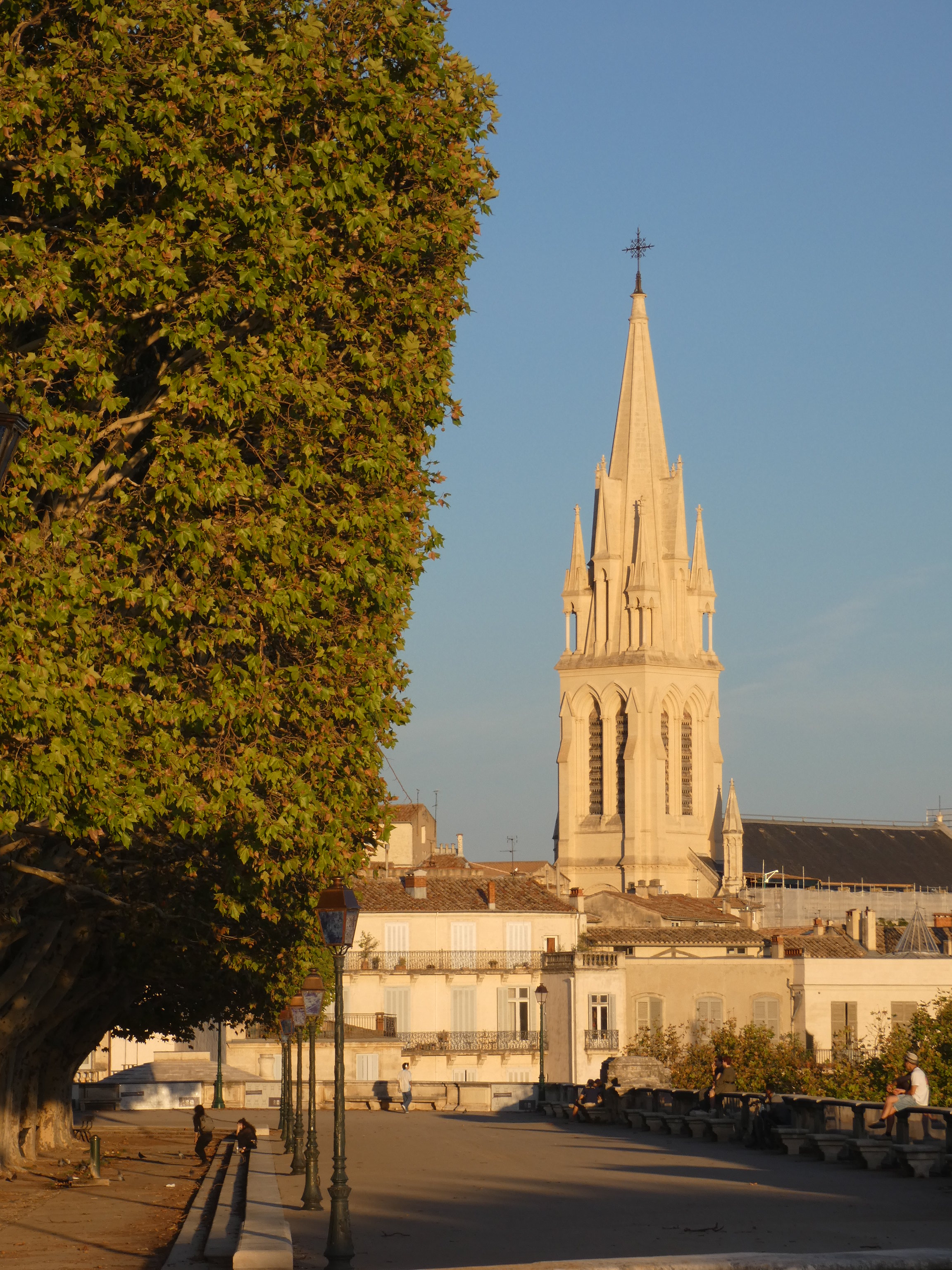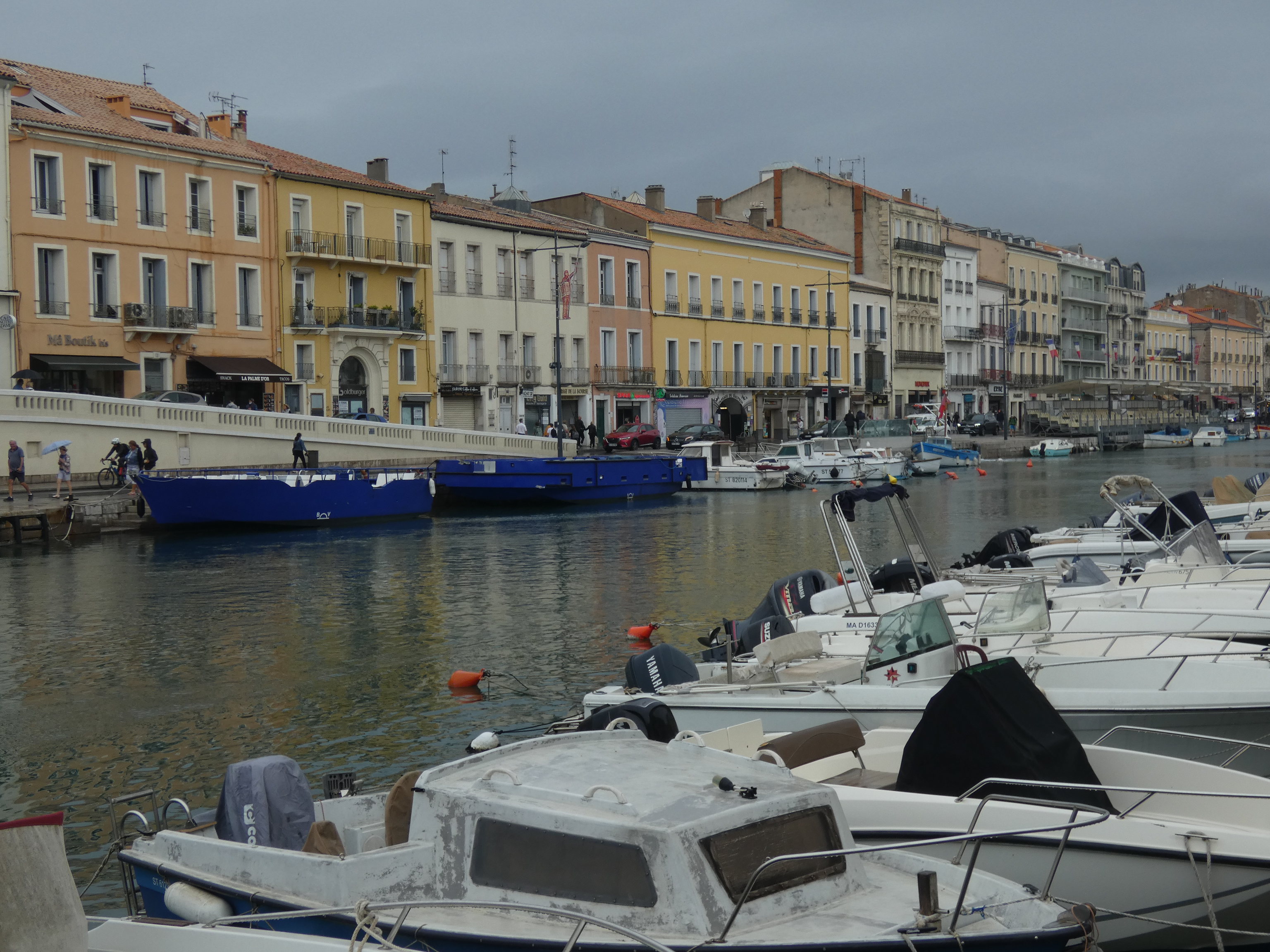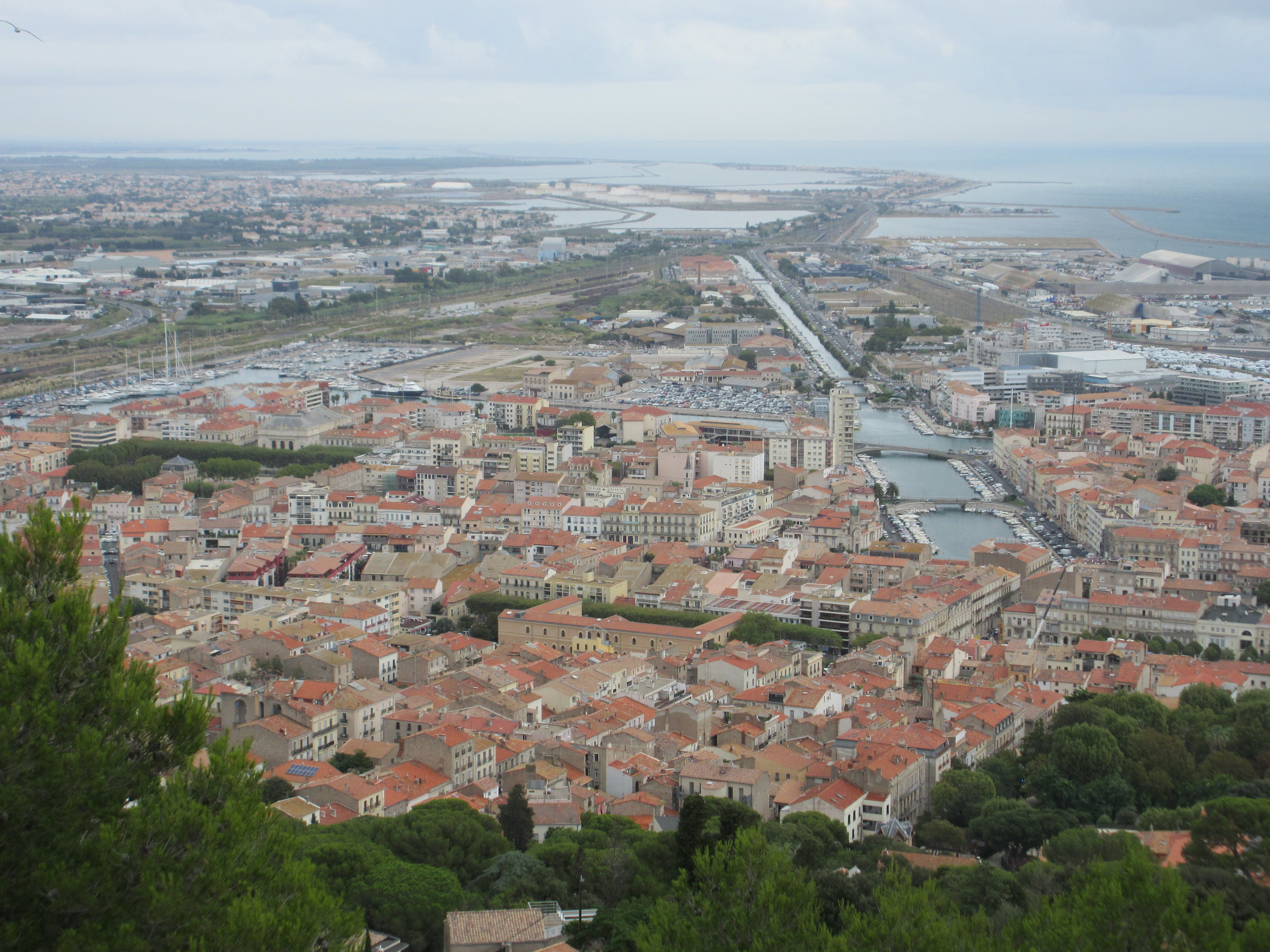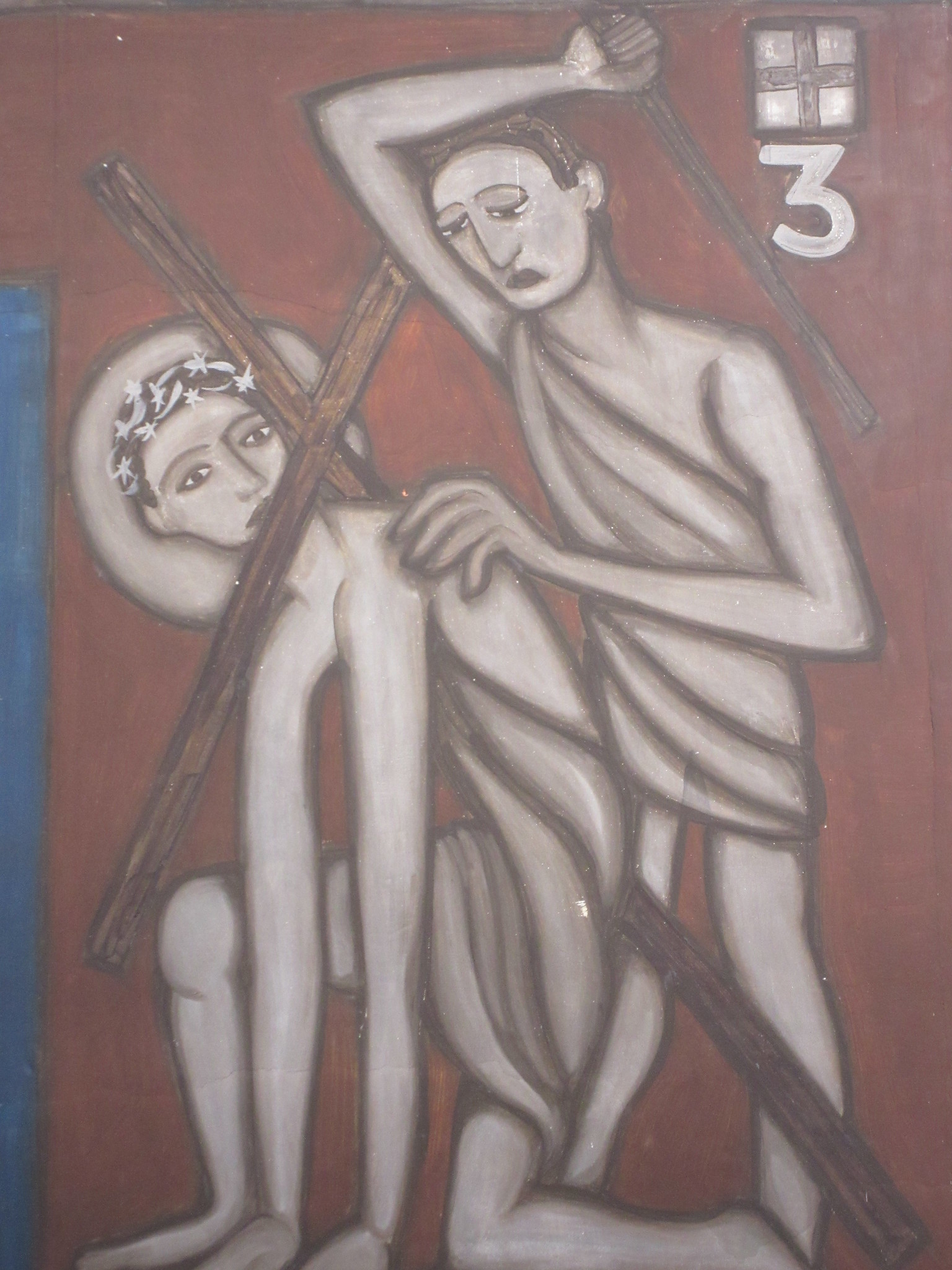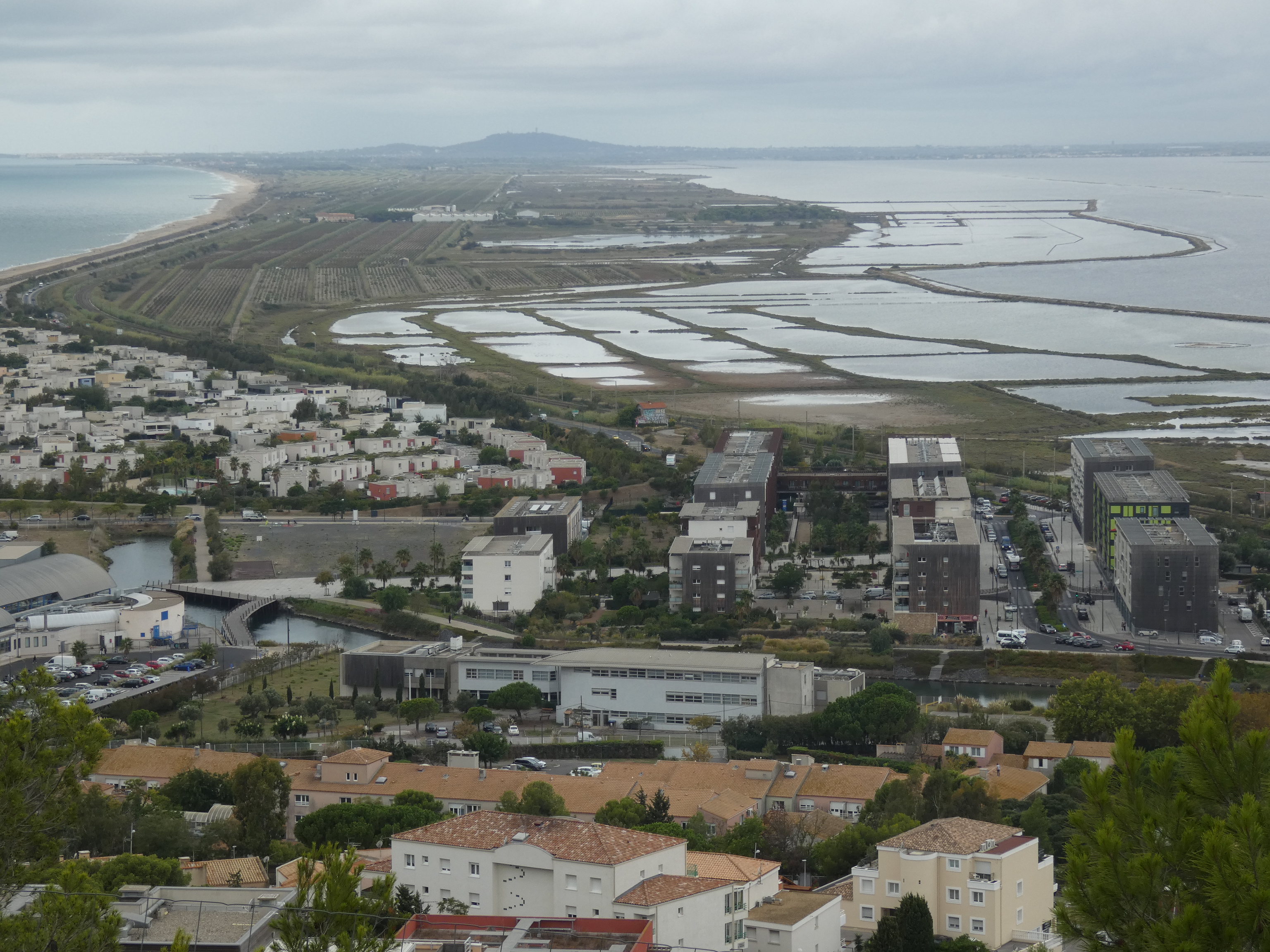Visited on: Monday 18 – Thursday 21 September 2023
After a week camping in Avignon, I had arranged to spend the last three nights of my trip in Montpellier, France’s seventh largest city, in the département of Hérault to the west of the Camargue.
Day 8: Montpellier
I had booked a fairly late train to Montpellier on Monday morning, allowing plenty of time to pack away my tent and get to the railway station. It was a gloomy morning when I set off from Camping Bagatelle for the last time, but by the time I arrived at Montpellier’s Saint-Roch station just after midday, the sun was blazing, and I was immediately struck by the Mediterranean feel of the city, which was noticeably more metropolitan and vibrant than Avignon.
I was staying at the Aparthotel Adagio, a modern block in a pleasant suburb a mile and half southeast of the city. Check-in officially started at 2 pm, but the reception staff were happy to hand over my room card an hour early. Unexpectedly, my spacious room turned out to be a proper apartment containing a kitchenette equipped with hotplates, a microwave oven and fridge. Realising that I would be able to enjoy cooked meals for the next three nights, I took advantage of a Lidl supermarket next to the hotel to stock up on provisions before spending the rest of the afternoon exploring the city.
After dropping off the shopping in my hotel room, I set off towards the city centre along the Avenue des États du Languedoc. Entering a district of high-rise tower blocks, I wasn’t quite sure where to go, but my attention was drawn to a large shopping centre next to a busy road junction with a steady stream of blue street trams.
Stretching eastwards from the shopping centre is an elongated complex of Classical-looking commercial and residential blocks arranged into a succession of pedestrianised squares with fountains and ornamental trees. Designed by the Catalan architect Ricardo Bofill, the Antigone district was created in the 1980s on the site of a former barracks. The architect himself has expressed reservations about the development, and there is certainly something disturbingly utopian about its rigidly symmetrical façades of limestone and glass, but it seemed a lively place, frequented by pedestrians and cyclists.
At the centre of the district, a giant archway leads into the Place de Thessalie, with its bizarre central fountain adorned with muscular demigods.
Further east is the vast semi-circular Place d’Europe, flanked by a pair of austere neoclassical crescents. Its centrepiece is a statue of the Winged Victory of Samothrace, one of several imitation Greek and Roman sculptures reflecting the tastes of the Mayor of Montpellier who commissioned the development.
Curving around the eastern edge of the city through a district of modern tower blocks, Montpellier’s main river, the Lez, is heavily canalised, giving the impression of a vast Italian water garden surrounded by fountains, steps and columns. Presiding over the scene is the Hôtel de Région, completed in 1989 and also designed by Ricardo Bofill, with its giant rectangular archway.
I really wanted to spend the afternoon exploring the historic centre of Montpellier a mile to the west, so I turned back along one of the leafy avenues behind the façades of Antigone, which ascended a gentle hill to the massive stone walls of a bastion, part of a citadel constructed in the 1620s on Louis XIII’s orders after a series of rebellions.
After visiting the Office de Tourisme, I emerged on to the monumental Place de la Comédie, the city’s main focal point, with its fountains and opulent Beaux Arts architecture. Sadly, much of it was fenced off for redevelopment at the time of my visit.
Spread over a gentle hill, Montpellier’s old town is popularly known as l’Écusson (“escutcheon”) because of its shield-like shape. Unlike most other cities in this part of France, Montpellier didn’t exist in Roman times, but came into being in the 10th century, developing into an important trading centre over the next few centuries. The city was protected by ramparts and ditches in medieval times, but these have long since been demolished, apart from two surviving towers. Boulevards were laid along the perimeters of the medieval city in the 19th century, in imitation of Haussmann’s boulevards in Paris. Haussmann-style architecture, characterised by wrought iron balconies and elaborate sculptures, can be seen along the broad shopping street, Rue de la Loge, which crosses the old city from east to west.
Several streets converge at the centre of the city in front of the Prefecture of the Hérault département, a grandiose building constructed in 1867-70 around a late 17th century mansion.
Further west along Rue Foch, there are some impressively narrow Beaux-Arts mansions reminiscent of American “flat-iron” buildings, but the grandest façade belongs to the Palais de Justice, occupying the site of the city’s 12th century castle, which was demolished in 1577 during the Wars of Religion. The first court house was built here in 1629, but the present building was completed in 1853.
Next to it is Montpellier’s “Arc de Triomphe”, the Porte du Peyrou, completed in 1693. Designed by François D’Orbay to replace one of the gates of the old city walls, it was later embellished with reliefs and inscriptions in honour of Louis XIV following his death in 1715.
Across the road from the arch is the Promenade du Peyrou, an elevated, open area flanked by avenues of plane trees. Extending from its western end is an 800 metre-long aqueduct supported by two tiers of arches, constructed in 1753-66 to deliver fresh water from a spring 14 kilometres away to the water tower on the Promenade. The architect was Henri Pitot, the designer of the road bridge adjoining the Pont du Gard, who was undoubtedly inspired by the architecture of the Roman aqueduct.
Work on the Promenade began in 1689 to the plans of Augustin d’Aviler, but it was radically redesigned by Jean Antoine Giral nearly a century later. Its centrepiece is an equestrian statue of Louis XIV, the Sun King, originally erected in 1718, although the present one is a copy, as the original one was destroyed during the French Revolution. The hexagonal water tower, with its Baroque arches and Corinthian columns, was completed in 1768 as part of Henri Pitot’s scheme to supply the city with fresh water.
I sat down for a while on the steps overlooking the mirror pool, where an elderly man was entertaining the crowds with tunes on his Occitan fife and side drum.
St Peter’s Cathedral lies downhill from the Promenade du Peyrou in the north-western corner of l’Écusson, oddly attached to a large building housing the University’s Faculty of Medicine. This monumental church is strangely oriented in a north-northwest direction, rather than the typical eastward alignment.
The cathedral started life as the church of a monastery dedicated to Saint-Benoît and Saint-Germain, founded in 1364 by Pope Urban V. Two massive pillars supporting an arched canopy over the south door are all that remains of the medieval building, which was largely rebuilt in the early 17th century under the direction of Cardinal Richelieu, after sustaining serious damage during the Wars of Religion of the 1560s. In one incident in 1561, a large number of Catholic dignitaries were murdered by Protestant raiders, while another attack in 1567 resulted in the collapse of one of the towers, taking much of the building with it.
After the rebuild, further remodelling of the cathedral was carried out in the 18th century by Jean Antoine Giral. During the second half of the 19th century the chancel and bell tower were rebuilt in Gothic revival style to the designs of Henri Antonie Révoil.
The stunning interior of the nave, with its ribbed columns and high vaulted ceiling, reflects the gothique méridional appearance of the original 14th century church. Flanked by aisles divided into five bays each housing a separate chapel, the nave is an impressive 28 metres high. The stained glass of the clerestory windows casts a kaleidoscope of coloured light on to the pale limestone interior walls.
Giral’s incongruous neoclassical chancel was demolished in the 1850s and replaced with one modelled on the Gothic cathedrals of northern France, culminating in a seven-sided apse, flanked by two smaller apses at the ends of the aisles. The magnificent organ with its gilded sculptures at the southern end of the church was installed in 1778.
I was in no hurry to leave the cathedral, the spectacular interior of which was certainly one of the highlights of Montpellier.
There were only a few other landmarks left to visit, mostly located in the knot of streets on the sloping ground to the south of Rue de la Loge. One of the city’s most picturesque narrow alleys is Rue du Bras de Fer (“Iron Arm Street”), with its painted steps, which was traditionally home to a large number of basket makers. It apparently takes its name from a sign depicting an arm wrestler which used to hang from a lodge in the 18th century.
I eventually navigated my way to the 26 metre-high Babote tower, which stands at the southernmost point of the medieval city. It dates from the early 13th century, when the city was protected by a 2.6 km-long ring of walls, punctuated by 24 square towers and ten gates. An astronomical observatory was erected at the top of the tower in the 1740s, later serving as a semaphore communication station and a pigeon loft.
As the late afternoon sunshine was beginning to fade, I decided to head back to the hotel for a hot evening meal, hoping for an early night before a long day exploring Aigues-Mortes.
Day 9: Aigues-Mortes
I had been particularly looking forward to my visit to Aigues-Mortes, a walled medieval town remotely situated in the south-western corner of the Camargue a few miles inland from the coast. I was delighted to wake up to a cloudless, sunny morning for my trip to this evocative city. It was frustrating that the bus didn’t leave Montpellier until 9.40 am, as I wanted to get to my destination as early as possible to look for flamingos and other wildlife on the saltmarshes around the town.
The liO no. 606 bus to le Grau-du-Roi departs from Place de France, which is actually a plaza in the grounds of a large shopping and leisure complex on the eastern outskirts of the city. It was about a mile and a half’s walk from my hotel, but I had plenty of time to get there, so I made a detour through the Antigone district, crossing the bridge next to an unusual tower block called l’Arbre Blanc.
The bus journey to Le Grau-du-Roi was infuriatingly slow, making a lengthy diversion to serve Montpellier’s new TGV station, before touring an ugly high-rise coastal resort called Carnon. Excited to see a flock of pink flamingos feeding in a lagoon near the airport, I was impatient to reach my destination.
The bus proceeded along the coastal strip to the next resort, La Grande-Motte, a rather more striking place than Carnon with several pyramid-shaped apartment complexes surrounding a busy marina. It was just a few miles further to Le Grau-du-Roi, where the bus skirted around a lagoon before depositing its passengers on the southern side of town. Getting across to the town centre was a bit of a palaver, as much of the area around the bullfighting arena was blocked off by metal barricades and the pavement of the traffic-clogged main street was also fenced off for repairs, hardly creating a welcoming impression
Le Grau-du-Roi takes its name from the Latin “gradus” (“step”), apparently referring to the opening of a shallow saline lake into the sea. Over the centuries, the courses of the Camargue’s two main rivers, the Rhône and Vidourle, have shifted. In the late medieval period, when Aigues-Mortes was still a major sea port, large ships could enter a winding channel near La Grande Motte to dock right alongside the ramparts of the old city, but after severe storms breached the coastal strip in the 1570s, a new settlement began to develop at le Grau. It was later renamed “le Grau-du-Roi” or “le Grau Henri” in honour of King Henry IV, who had ordered the navigation channel to be reinforced with stone breakwaters. A six kilometre-long channel from Aigues-Mortes to le Grau-du-Roi was dug in the 1720s, subsequently reinforced with stone retaining walls in 1845.
A large number of Italian immigrants settled in the town in the late 19th century when its economy was mainly based on fishing, but during the 20th century the focus changed to tourism, particular after a railway extension was built from Aigues-Mortes to the coast in 1909.
The shops and cafés lining the shady eastern side of the canal were already swarming with crowds when I arrived. After buying a couple of postcards, I crossed the small bridge to the quieter west bank with its iconic early 19th century lighthouse.
There wasn’t a lot to see in le Grau-du-Roi, the historic centre of which only extends for a couple of blocks either side of the canal. Eager to get started on the four-mile walk to Aigues-Mortes, I made my way to the cycleway and footpath which extend along the narrow strip of land separating the Canal Maritime from the Étang du Médard. The ramparts of Aigues-Mortes were clearly visible on the flat horizon beyond the vast saline lagoon.
It wasn’t long before I spotted a single greater flamingo wading through the deep water quite some distance from the shoreline. I had seen grey-plumaged juvenile flamingos on previous trips to Spain and Portugal, but this was the first time I had seen pink flamingos in the wild. At the northern end of the étang, I was rewarded with a closer view of a group of four flamingos.
The flamingo population of the Camargue swells to about 60,000 individuals during the summer months, with about 25,000 breeding pairs. The majority migrate to North Africa for the winter, but a few thousand remain in France all year.
At the far end of the Étang du Médard, I reached a patch of woodland surrounding a large house, providing a bit of respite from the beating sun before the long walk along the shore of the next vast lagoon. The crenellated walls and towers of the city were much closer now. There didn’t seem to be any flamingos on the second étang, but a little egret was watching me intensely from a nearby fencepost. The deep, salty water didn’t seem to support much bird life apart from flamingos, which are specially adapted to filter-feeding in this environment.
On the shore of a nearby lagoon is the Salins du Midi salt works, resembling a snow-capped volcano. Salt has been harvested in the area around Aigues-Mortes at least as far back as the 4th century BC. Records from the 12th century indicate that there were 17 small salt marshes each with a different owner. After a series of severe floods in the mid-19th century, the owners of the various salt works decided to combine into a single company, the Salin d’Aigues-Mortes. Nowadays, about 500,000 tons of salt a year are harvested on the site.
Reaching a boatyard opposite Aigues-Mortes’ long southern rampart with its seven crenellated towers, I was frustrated to discover that there was nowhere to cross the canal at this point. I had no option but to continue along the west bank of the canal for several hundred yards to the small road bridge in the northwest corner of the city.
The history of Aigues-Mortes goes back to the late 8th century, when Charlemagne built a lookout tower on the site of the present Tour de Constance to protect the local saltpans, later establishing a Benedictine abbey next to the tower. In 1240, King Louis IX ordered the construction of a new port on the Mediterranean, not wanting to rely on the goodwill of the neighbouring rulers (the Holy Roman Emperor in Provence and King James I of Aragon) to provide France with access to the sea.
The Tour de Constance and an adjoining castle were the first defensive structures to be built. Work on the mile-long ramparts around the city began in 1266 and took about three decades. Punctuated by five towers, five large and five smaller gates, the walls are eleven metres high and three metres thick. The city was originally surrounded by a moat, but only the canal along its western edge survives.
Aigues-Mortes had a monopoly on goods arriving into the Kingdom of France from the Mediterranean until the annexation of Provence in 1481. During the Wars of Religion in the late 16th century, the city came under Protestant rule and was designated one of eight safe havens for French Protestants. A Huguenot garrison was stationed there until 1622, when it was besieged by Cardinal Richelieu’s forces and ceded to the King of France, after which it became a stronghold of the counter-reformation. The city’s importance as a coastal port declined over the centuries, but it found a new role as the centre of a wine-producing region in the 19th century, as the area’s sandy soils seemed to be unaffected by the phylloxera which blighted grapevines elsewhere in southern Europe.
When I eventually reached the road bridge next to the junction of the Canal Maritime and the Canal du Rhône à Sète, I crossed over and immediately turned back along the east bank of the canal, keen to get a good view of the long chain of towers along the city’s southern perimeter, an inspiring sight which must have hardly changed since the 13th century.
While access to the city from the north was heavily restricted for defensive reasons, the southern rampart incorporated five gates, providing convenient access to the port. The southern side of the city was considered less vulnerable to attack, as it was protected by the lagoons to the south. One of the most impressive gates is the Porte des Moulins, the twin semicircular towers of which carried a pair of windmills in the 17th century.
Passing through the Gothic-arched gateway, I made my way through the grid of narrow streets lined with cafés and gift shops. Spotting several people walking along the ramparts, I was eager to find out how to gain access to the walkway. I found the ticket desk for the “Tours et Remparts d’Aigues-Mortes” in the northwest corner of the city, at the foot of the Tour de Constance with its minaret-like lighthouse. Entry to the UNESCO-listed monument cost a very reasonable 9 Euros, taking in the Tour de Constance and part of the Governor’s residence as well as a complete circuit of the 1,640 metre-long ramparts. The visit begins in a small courtyard garden in front of the Governor’s residence, a 17th century building constructed on the site of the demolished medieval castle.
The Tour de la Constance was built between 1240 and 1248 as part of the defences of the castle, the rest of which was destroyed in 1421 during the Civil War between the Burgundians and Armagnacs. For centuries, the tower was used as a prison for Protestants, among them Marie Durand, who was incarcerated there at the age of 19 in 1730 and only released 38 years later.
The interior consists of two storeys. The dungeon, which has a separate entry, was used to store food, armaments and firewood. The “salle basse”, with its rib-vaulted ceiling, could be accessed through entrances to the north and south, both protected by portcullises. Above it is the “salle haute”, where Protestant women were imprisoned.
Visitors have to take the lift up to the roof terrace before descending the tower via a spiral staircase. From the 26 metre-high terrace, there are fine views along the two branches of the Canal du Rhône à Sète. To the northeast, a ruler-straight stretch of waterway is the first section of what was originally called the Canal de Beaucaire, completed in 1789 as far as Saint-Gilles and later extended to Beaucaire in the early 19th century. At right angles to it, another branch of the canal heads in a north-westerly direction, curving around to La Grand-Motte before crossing several lagoons to reach Frontignan, near Sète.
The rest of the tour makes a complete anticlockwise circuit of the rectangular ramparts, which measure approximately 300 metres from north to south and 500 metres from east to west. The stone walls and ramparts survive in good condition, but in medieval times they would have looked somewhat different, surmounted with overhanging wooden galleries called “hourds”. These performed a similar function to stone machicolations, allowing projectiles to be dropped through holes on to attackers. Along the inside of the walls, fifteen stone staircases were built to enable troops to access the walkway along the ramparts, but most have now been closed off.
The western rampart is only punctuated by one small gate at the halfway point before the Tour des Bourguignons in the southwest corner, so called because a garrison of Burgundians was massacred there in 1421 during the Civil War.
The southern rampart offers fine views over the saline lagoon, which is distinctly pink in colour because of an alga called Dunaliella salina which carries large amounts of the pigment beta-carotene, the ultimate source of flamingos’ pink feathers.
From the eastern rampart, it is easy to see the grid pattern of the city’s streets, typical of the fortified cities (bastides) modelled on Roman castra which were built during the 13th and 14th centuries.
The landward side of the city required stronger defences, and therefore six towers were built along the northern rampart, of which only two had gateways. The Porte de la Gardette would have been the city’s main entrance, protected by a barbican and a drawbridge over a moat and heavily guarded by soldiers.
Mirroring the layout of a Roman castrum with a forum at its centre, Aigues-Mortes has a large, rectangular central square, a busy but laid-back spot with street cafés, shady trees and a large fountain. Its most interesting sight is the Church of Notre-Dame-des-Sablons, with its unusual flat west tower. The building probably dates from the mid-13th century and therefore pre-dates the construction of the city walls. It was vandalised by Protestants in 1575, and the bell tower collapsed in 1634. It was restored in the 1740s but closed down at the time of the French Revolution, and was then used variously as a barracks, grain merchant’s store and salt warehouse. The interior was restored to a simpler, medieval-style appearance in the 1960s.
In a quiet, palm tree-fringed square to the east, I spotted a Citroën Méhari, one of numerous 2CV variants that are rarely seen in the UK nowadays, production having ended in 1988.
At the far end of the square is the Chapel of the Brotherhood of Grey Peninents, established in 1400. It was destroyed during the Wars of Religion in about 1575, but was rebuilt in Baroque style in 1607. A few years later, a breakaway faction established a new brotherhood, the White Penitents, with its own Baroque chapel nearby.
Having thoroughly explored this fascinating but compact old city, I exited via the massive Porte Saint-Antoine, which in medieval times would have been a secondary entrance to the city from the north.
I decided that I might as well walk back to le Grau-du-Roi, hoping for further sightings of flamingos feeding on the lagoons. By the time I got back to le Grau, it wasn’t long until the bus was due, so I headed straight over to the bus stop for the no. 606 near the school on the southern side of town.
Arriving back at Place de France an hour later, I decided to catch a No. 1 tram into the city, staying onboard as far as the western end of l’Écusson. Ascending the hill past the Tour des Pins, one of the two surviving towers of the medieval town walls, I reached the Promenade du Peyrou just as the low sun was beginning to cast a golden glow over the city’s handsome buildings.
I decided to join a large gathering of people on the terrace around the water tower to watch the sun go down at the end of a beautiful day.
Day 10: Sète
Sadly, Tuesday evening was the last time I was to see the sun on my holiday. There was torrential rain overnight and the next morning the weather was still damp and drizzly. I had considered spending the day in the Cévennes mountains, but had eventually decided on the less ambitious option of a short train ride to Sète, which was just as well given the unsettled weather.
I headed over to Saint-Roch station early to buy a ticket for the 20-minute train journey to Sète. Having a few minutes to wait until the next train, I ambled up and down the upper concourse, a steel-framed glass structure completed in 2014 to manage the increasing volumes of passengers using the station.
Sète’s railway station is at the northern end of the city, quite a long walk from the city centre and harbour. The route into town took me along an avenue of plane trees bordered by Beaux-Arts-style buildings, more typical of a city in northern France than a Mediterranean resort. After several hundred yards, I reached a bridge over one of Sète’s numerous wide canals with their iconic rows of tall, narrow houses overlooking hundreds of moored motorboats. It was easy to see why Sète is known as the “Venice of Languedoc”, although it is hardly comparable with Venice architecturally; most of the houses lining the canal banks look to be of 19th century date, intermingled with drab 20th century blocks.
Spelled “Cette” until the early 20th century, this spot along the Languedoc coast, where Mont Saint-Clair rises abruptly from the flat coastal strip, was known to antiquity as Σήτιον ὄρος or Setius Mons. The city’s coat of arms features a whale, perhaps as a result of an etymological confusion with the Latin word for whale, “cetus”.
The present city owes its existence entirely to the construction of the Canal du Midi. It was founded by Louis XIV in 1666 as a port giving access to the Mediterranean from the 150 mile-long canal which was being built to connect the Garonne at Toulouse with the Étang du Thau. This would create a navigable waterway all the way from the Atlantic to the Mediterranean, avoiding the need for ships to sail around the Iberian peninsula. Completed in 1681, the Canal du Midi was at the time the most ambitious man-made waterway ever constructed, pre-dating the first purpose-built canal in the UK, the Bridgewater Canal, by 80 years.
Reaching the large harbour at the southern end of town, I walked to the end of the 650 metre-long jetty, occasionally spotting the iridescent blue flash of a kingfisher darting among the rows of white yachts. At the end of the pier is the 34-metre high Phare Saint-Louis, completed in 1948 to replace the previous 1861 lighthouse, which was destroyed when the Germans mined the harbour towards the end of the Second World War.
I scaled the steep streets of the town to the viewpoint at the summit of Mont Saint-Clair, 175 metres above sea level, from where there was a fine view along the Canal du Rhône à Sète towards the lagoon at Frontignan.
In the corner of the car park at the viewpoint is the pantile-roofed chapel of Notre-Dame-de-la-Salette, with its bizarre candle-shaped stone tower. Built in the 1860s, it incorporates parts of walls of an early 17th century fort. The walls and ceilings of its windowless, vault-like interior are decorated with brightly-coloured, cartoon-like frescoes painted in the 1950s, quite unlike any church interior I have ever visited before.
Hoping to spot some flamingos on the saltpans along the shore of the Étang du Thau, I headed west through the suburbs on the hilltop until I reached the entrance to a forest park called Les Pierres Blanches, where there was a fairly uninspiring “panoramic viewpoint” with views restricted by the surrounding pinewoods. The western flank of the hill offered a much better view of the flat coastal strip separating the Mediterranean from the Étang du Thau, a 13 mile-long enclosed salt water lagoon fringed with saltpans and oyster cages.
It took me quite a while to find the entrance to the nature reserve which had been established in a disused area of saltpans on the far side of the railway tracks. I could only see a few flamingos, mostly grey-plumaged juveniles, and the gloomy sky wasn’t good for photography. It started to rain, forcing me to head back towards the town, as there was nowhere to take shelter on the bleak saltpans.
Sète was rather lacking in indoor attractions suitable for a rainy day, as it was obviously geared towards summer holidaymakers and yachters, so I decided to catch an early bus back to Montpellier. I boarded a 602 bus to Sabines, a transport interchange on the south-western outskirts of Montpellier, from where it was only a short tram ride back to l’Écusson. I planned to spend the rest of the afternoon and early evening wandering around the old town, but the rain seemed to be getting heavier and more persistent, forcing me to take shelter in the central market hall, which was about to close for the evening. After buying a few postcards from a newsagent’s shop, I made my way back to the Aparthotel Adagio, not wanting to be out late as I needed to be up very early the next morning to catch the bus to the airport.
The dreary weather in Sète had been a bit of a disappointing end to my ten-day trip to France, but I had seen all of the places I wanted to, and had been very lucky with the timing of my trip, as the whole of Southern France was forecast to be rainy for several days after my return home. On the whole, I had been very impressed with France, with its ubiquitous impressive architecture, friendly people and cheap, reliable public transport, and decided that I should really try to explore more of the country in the near future.

